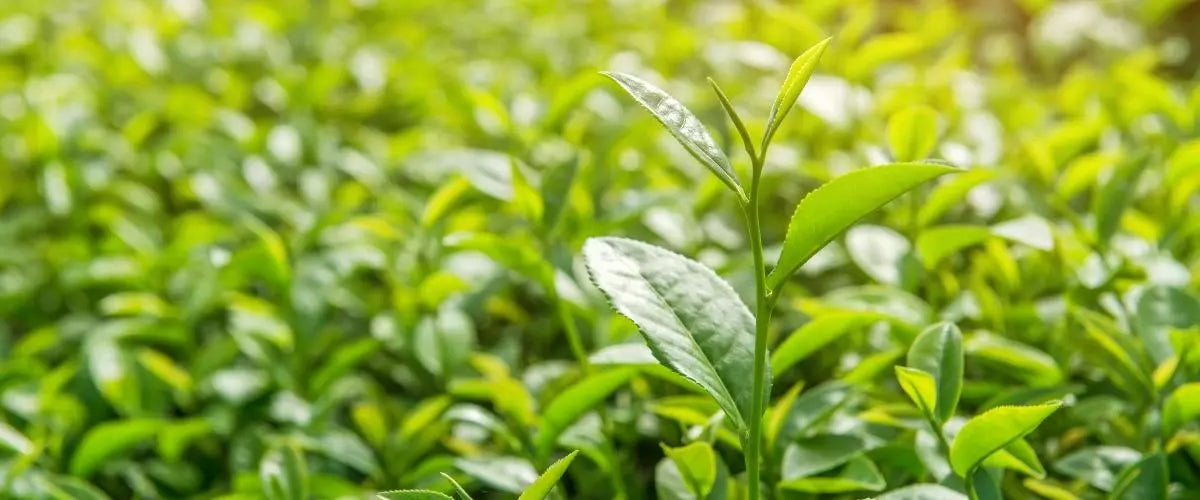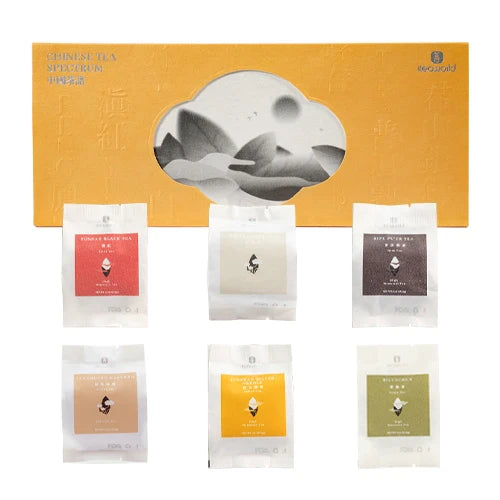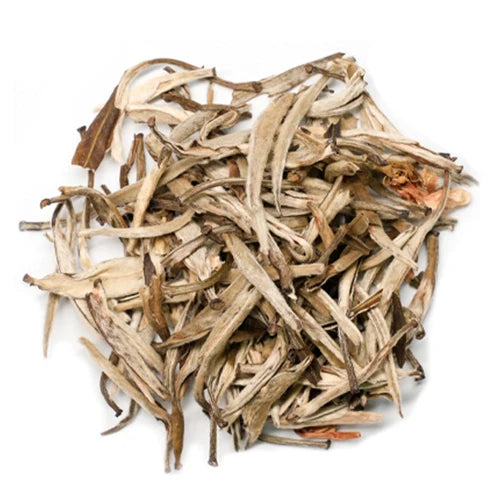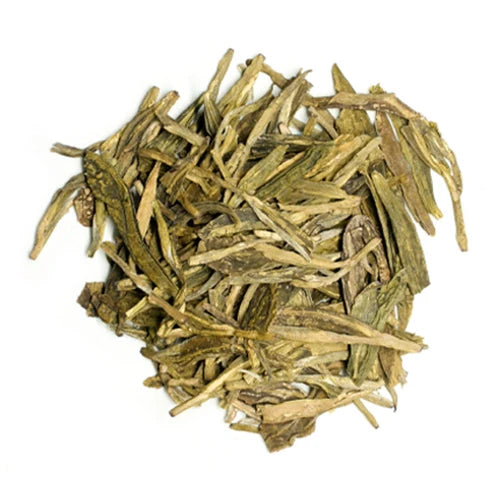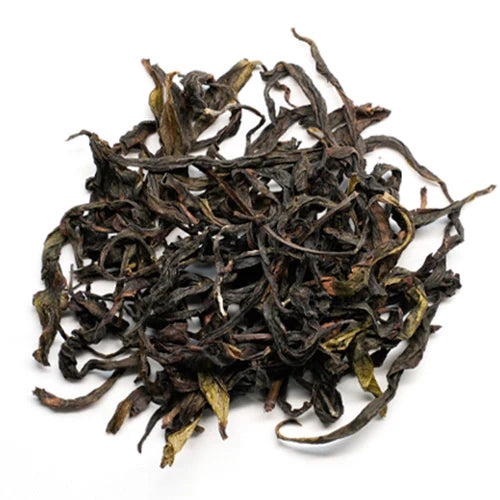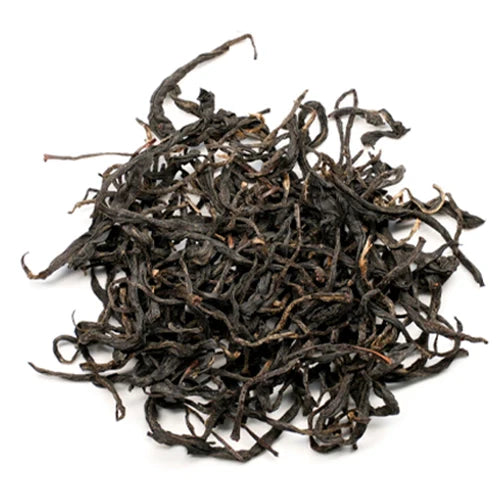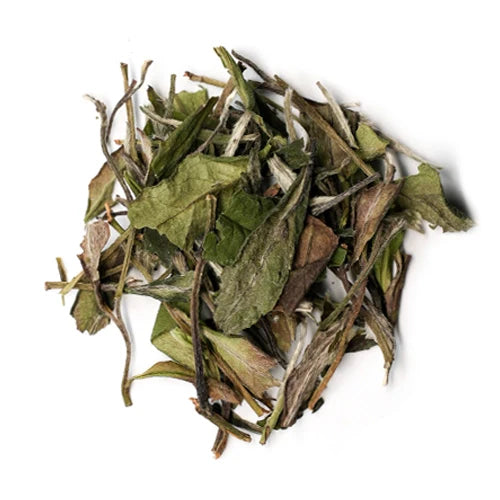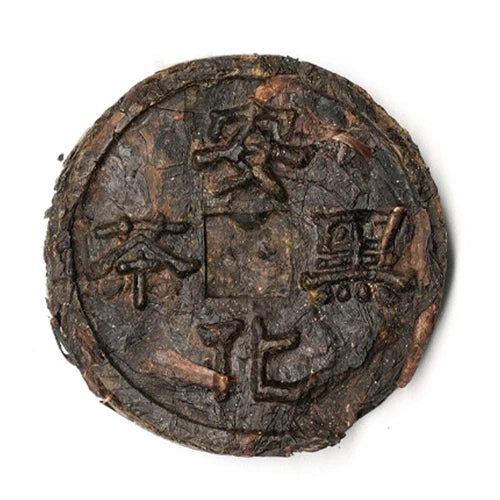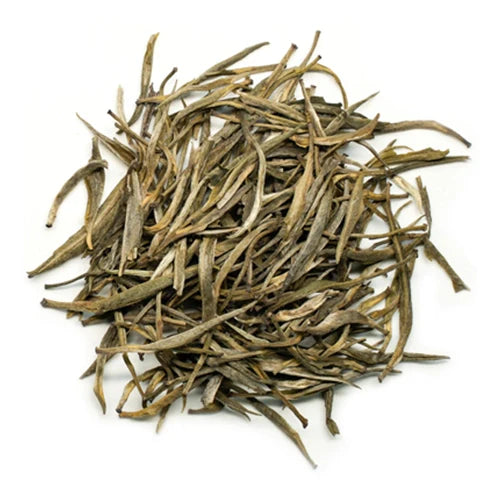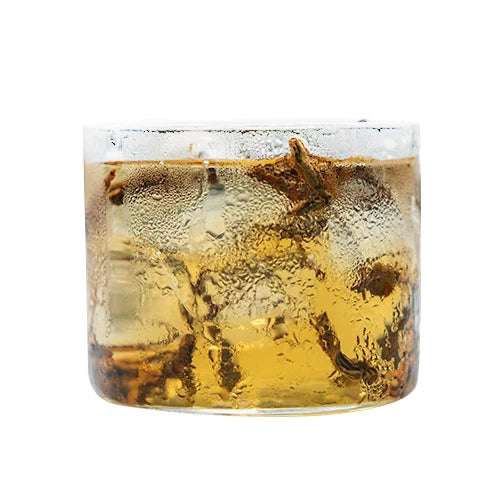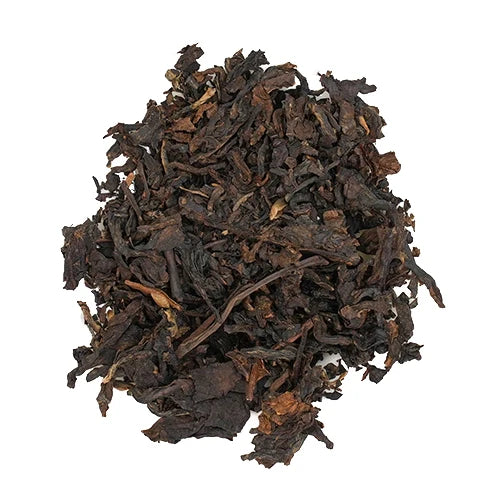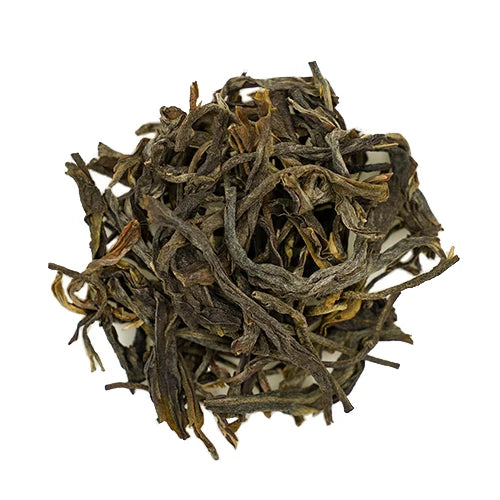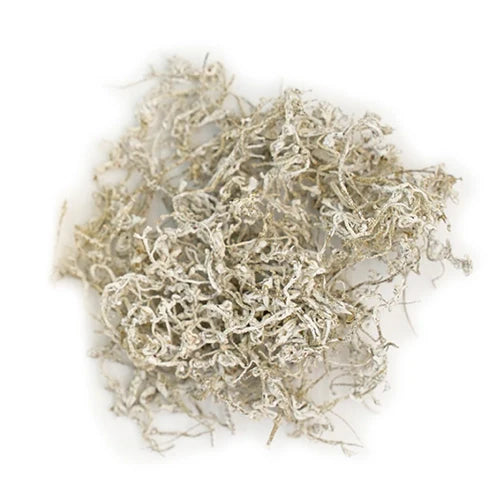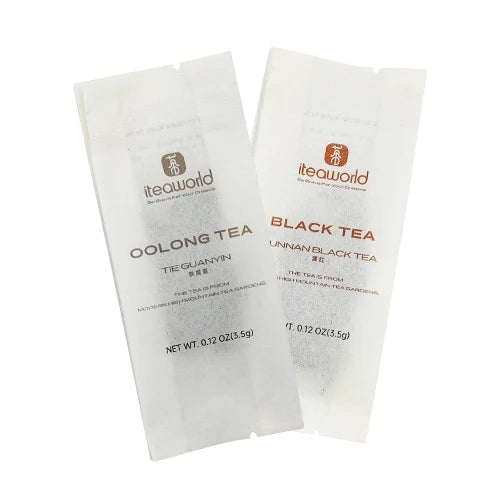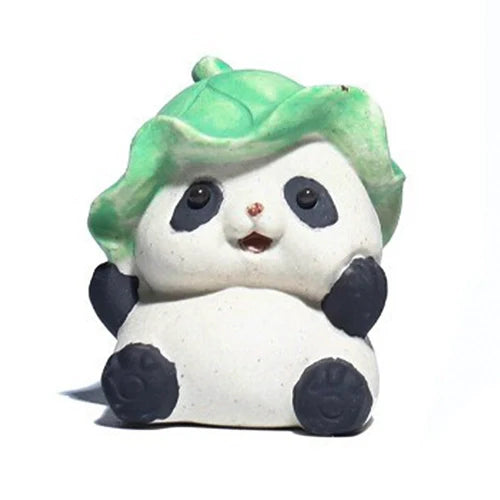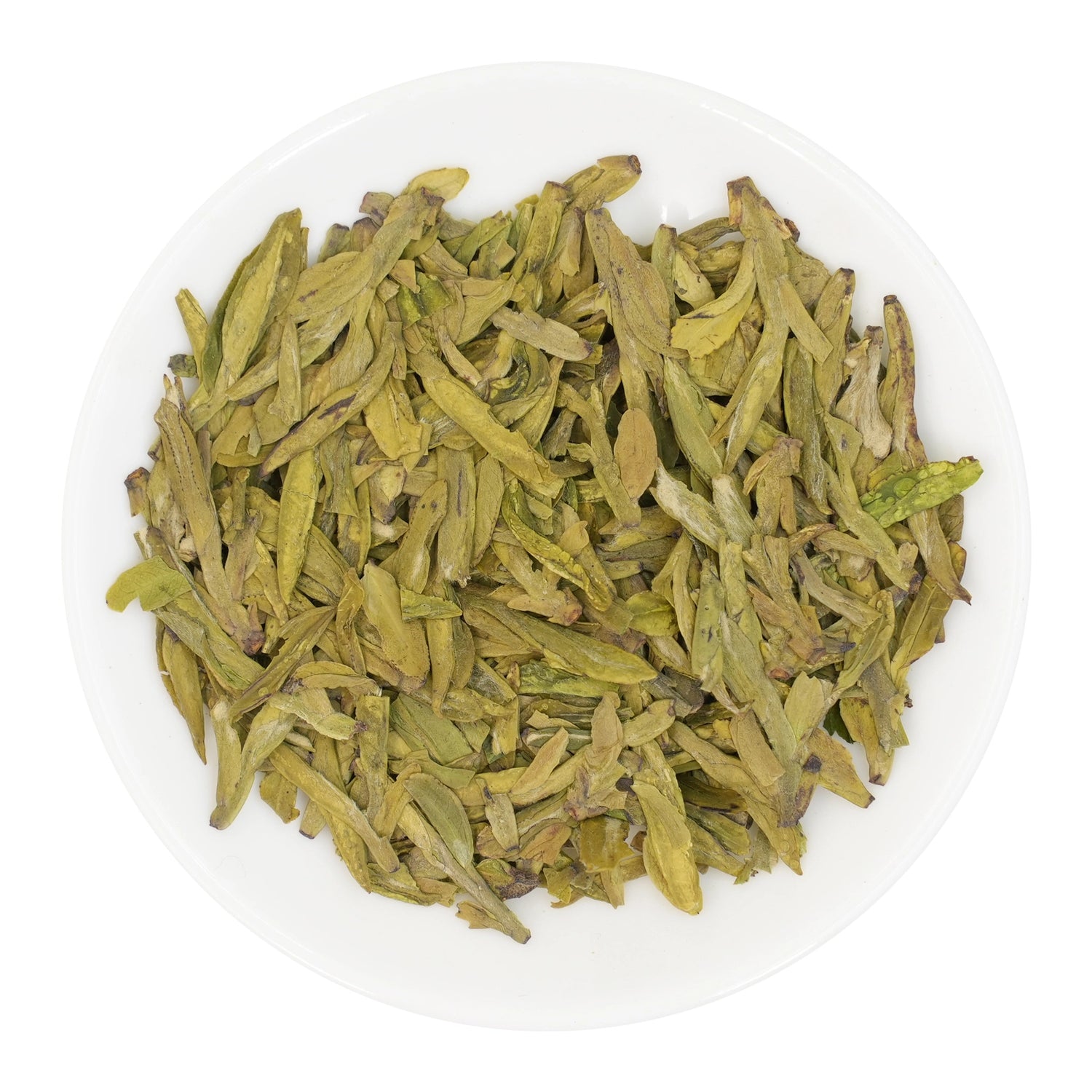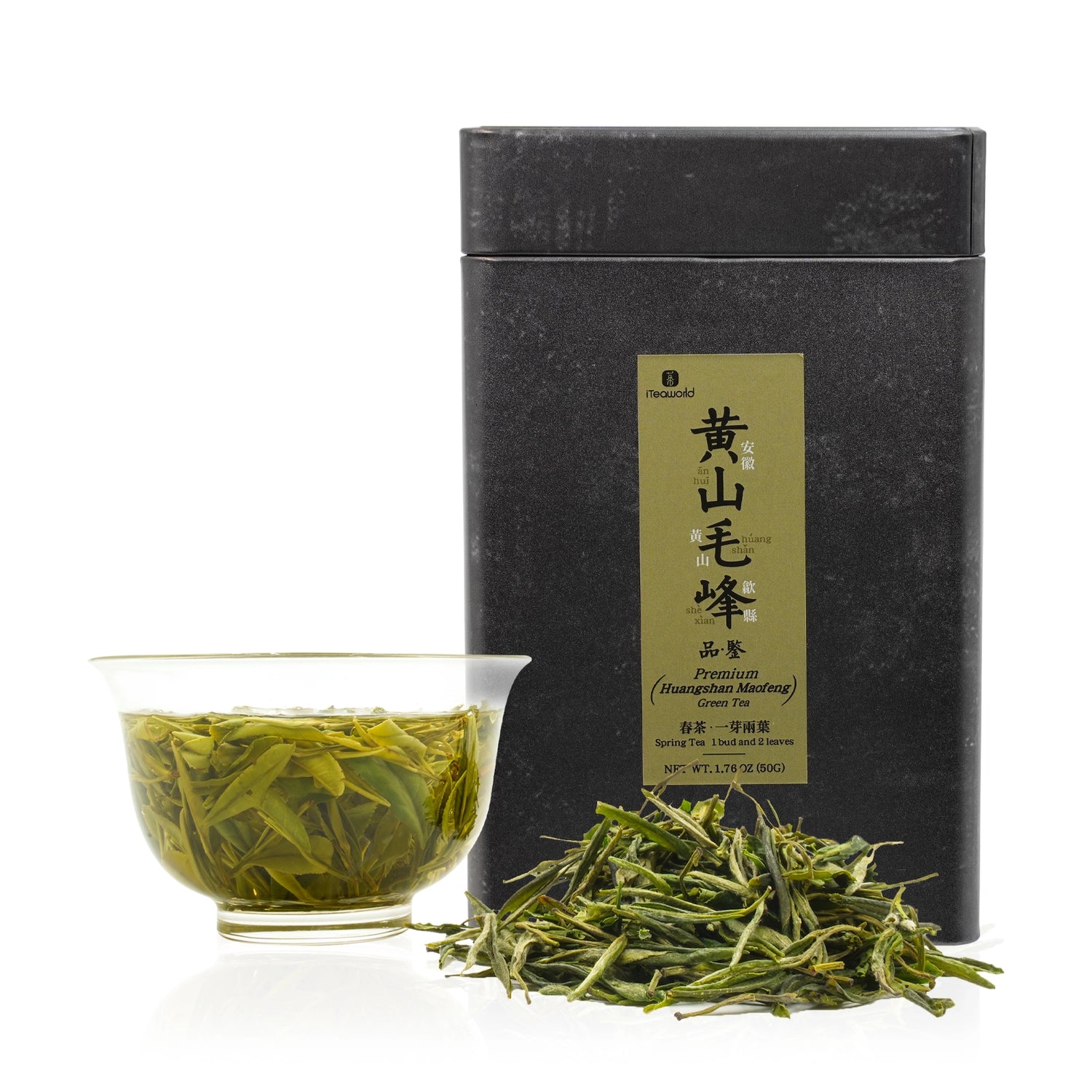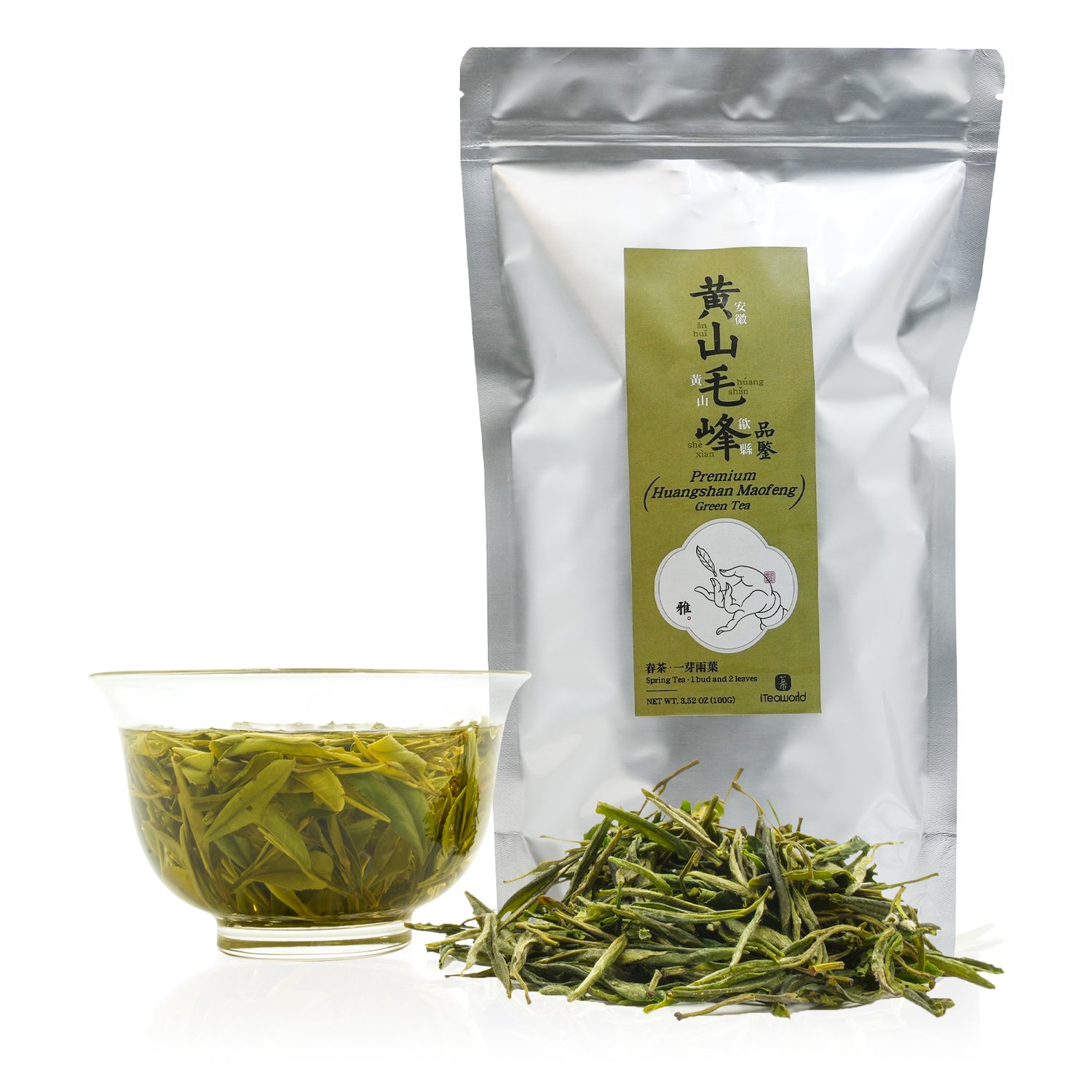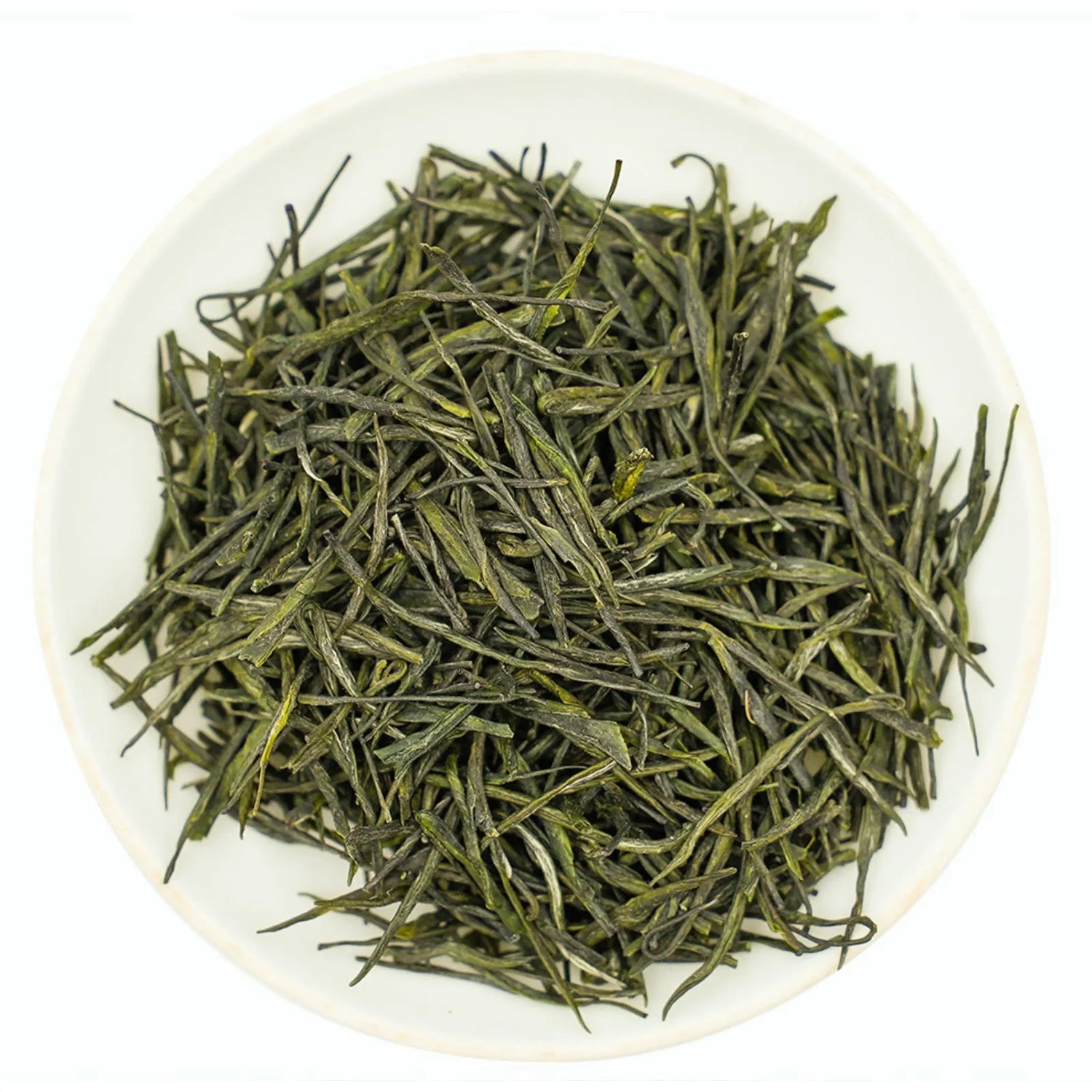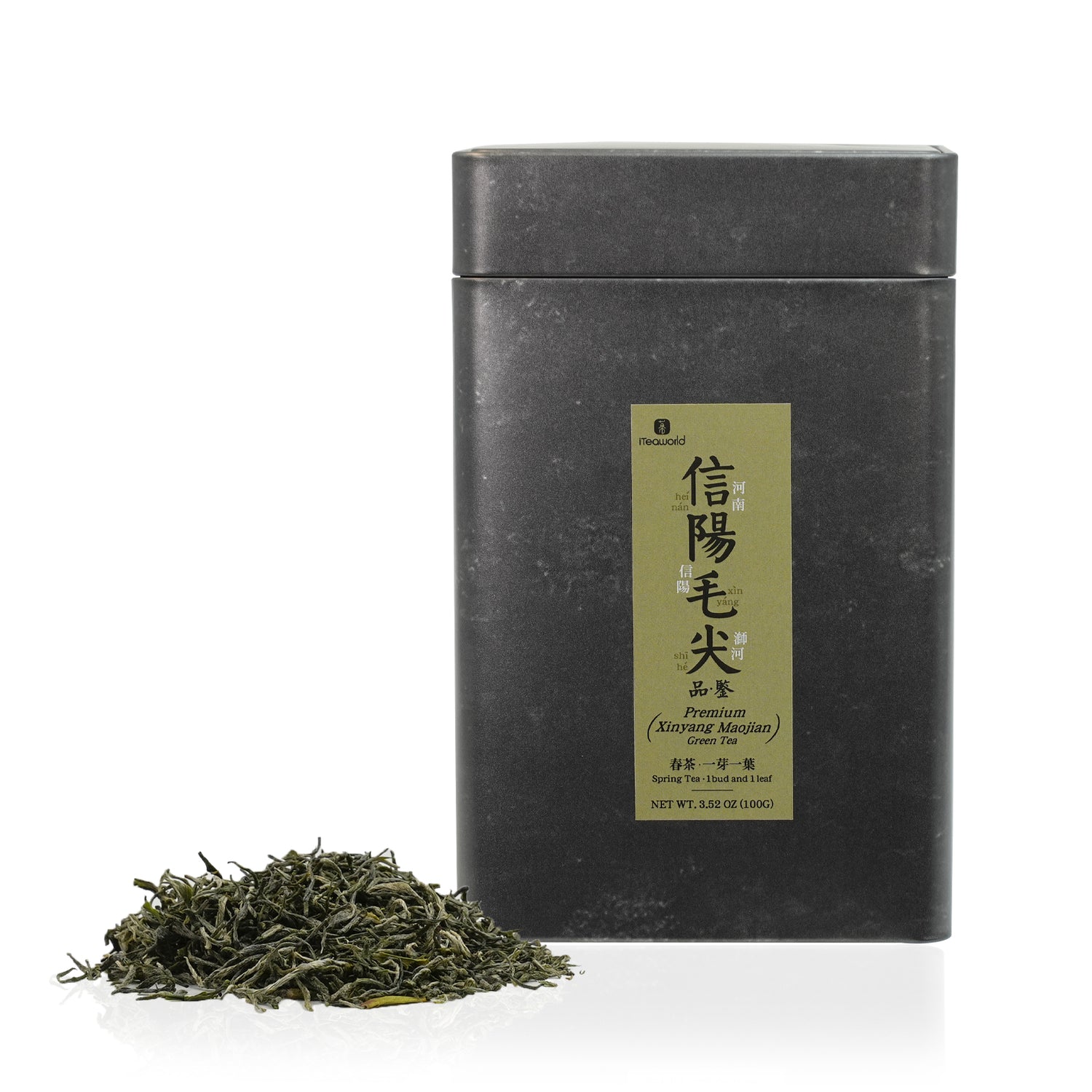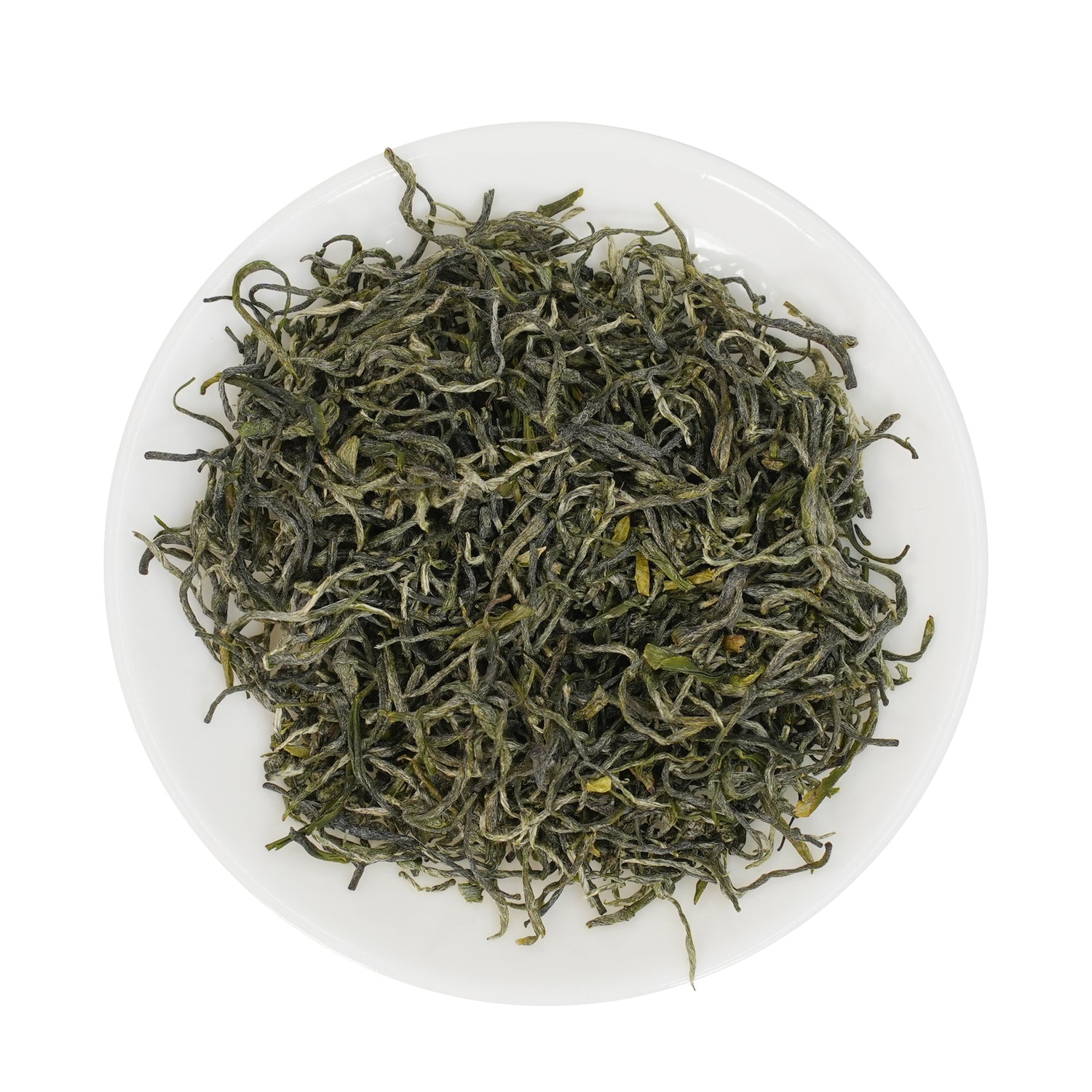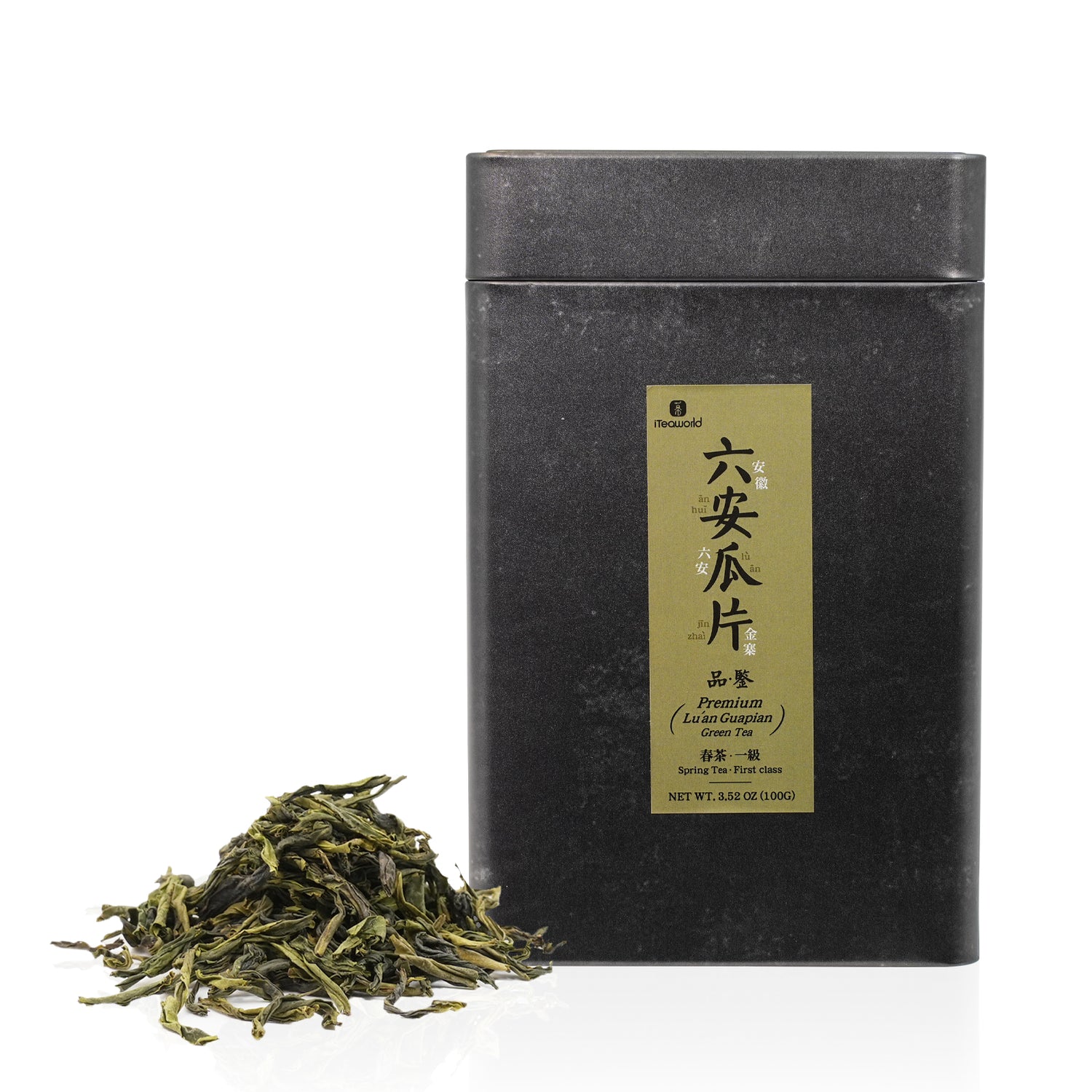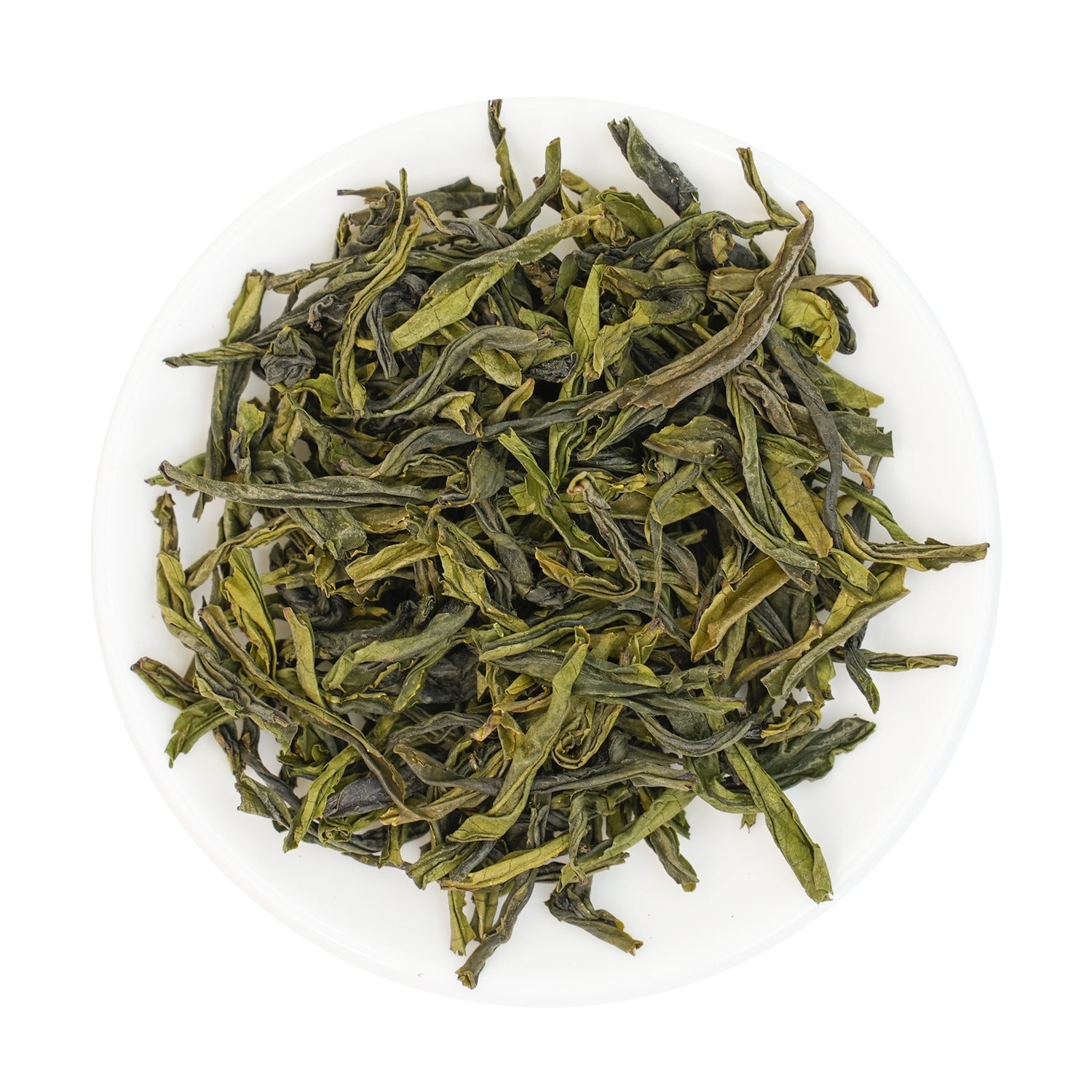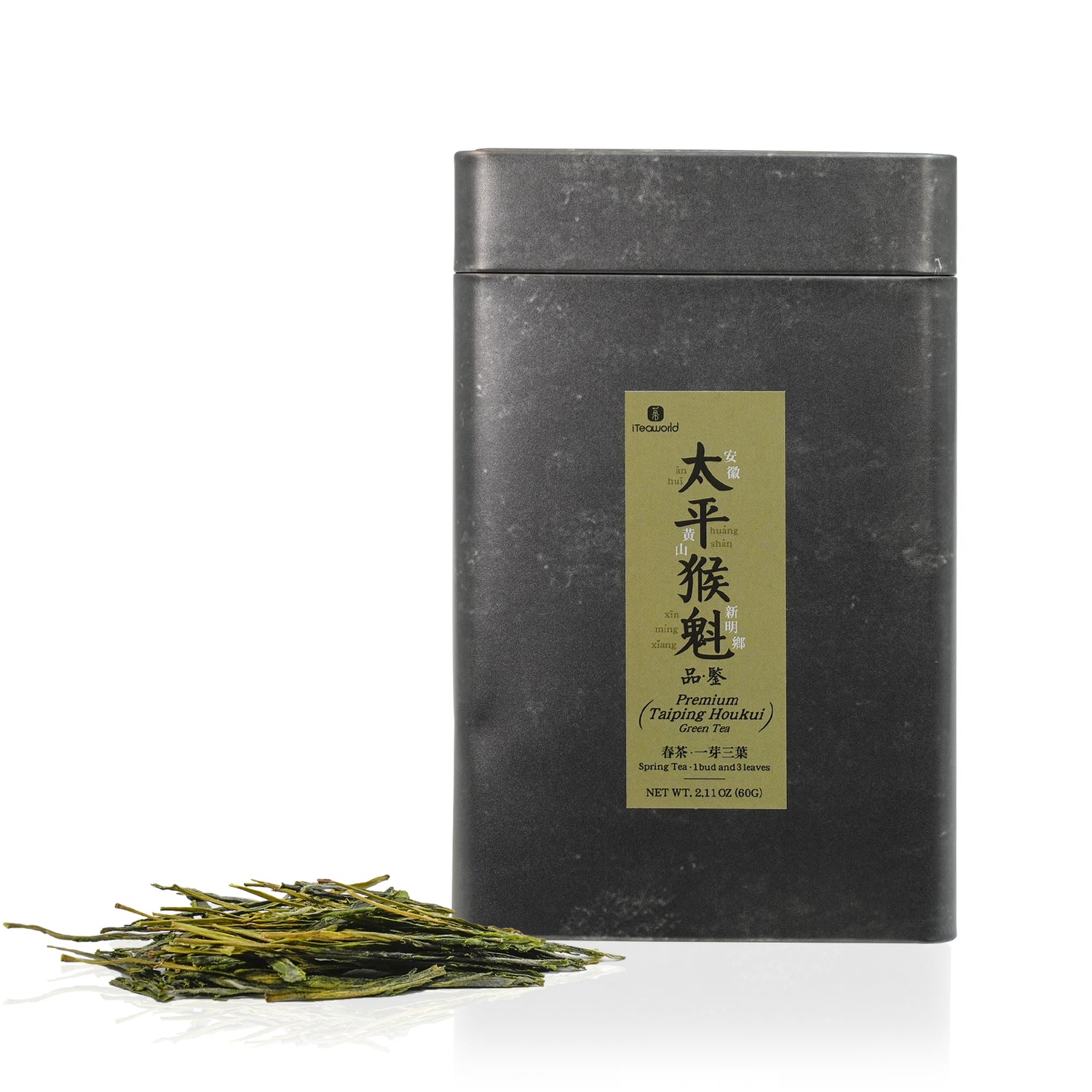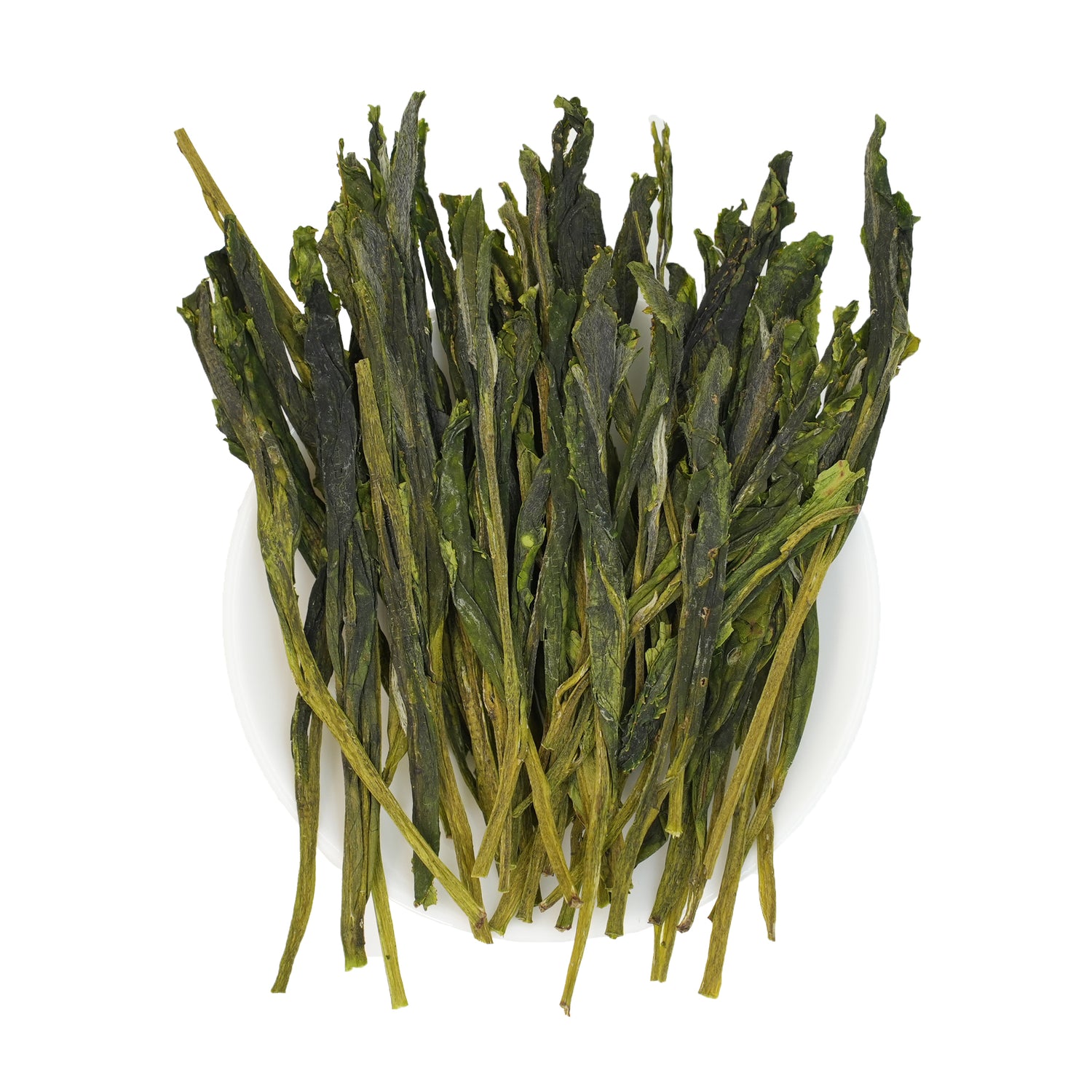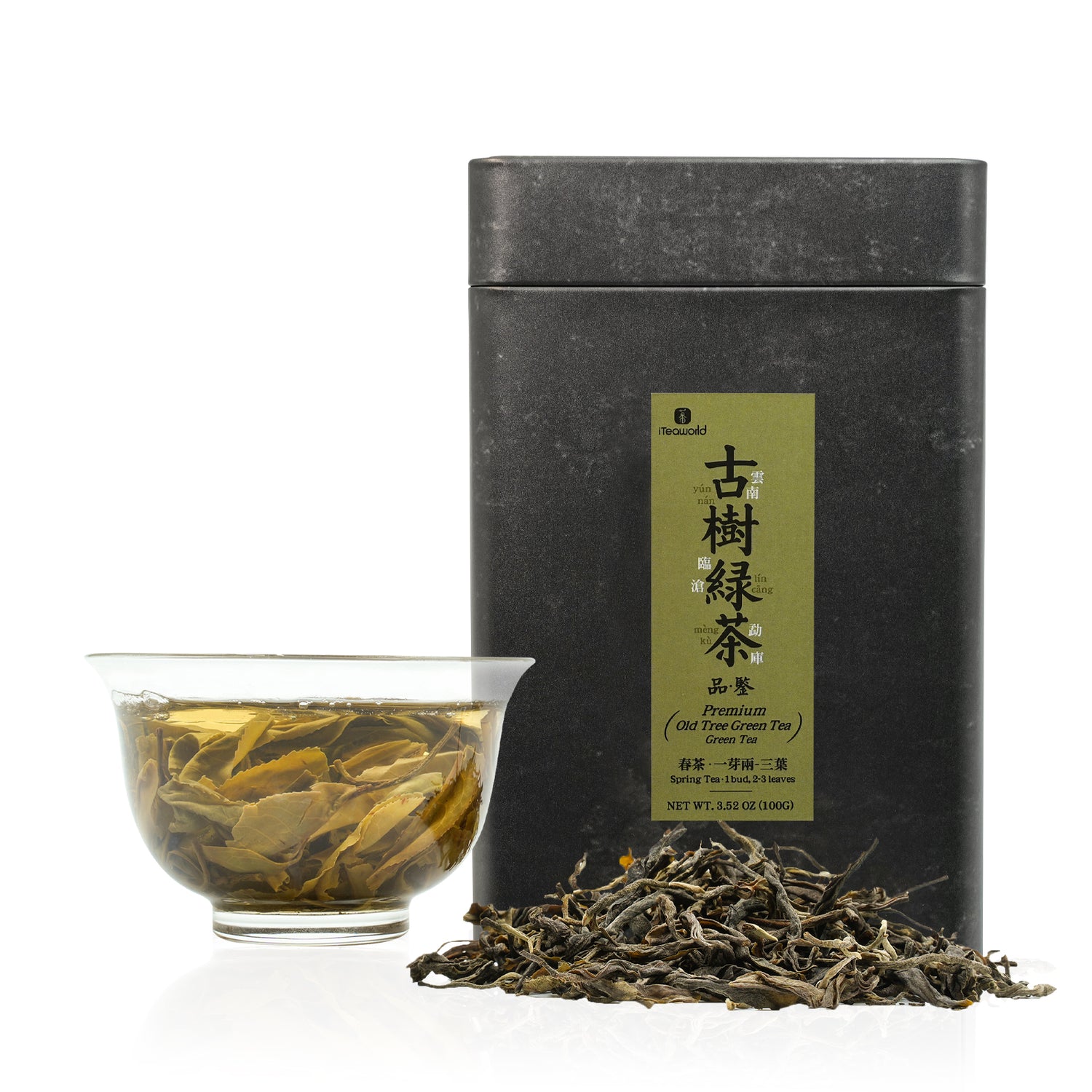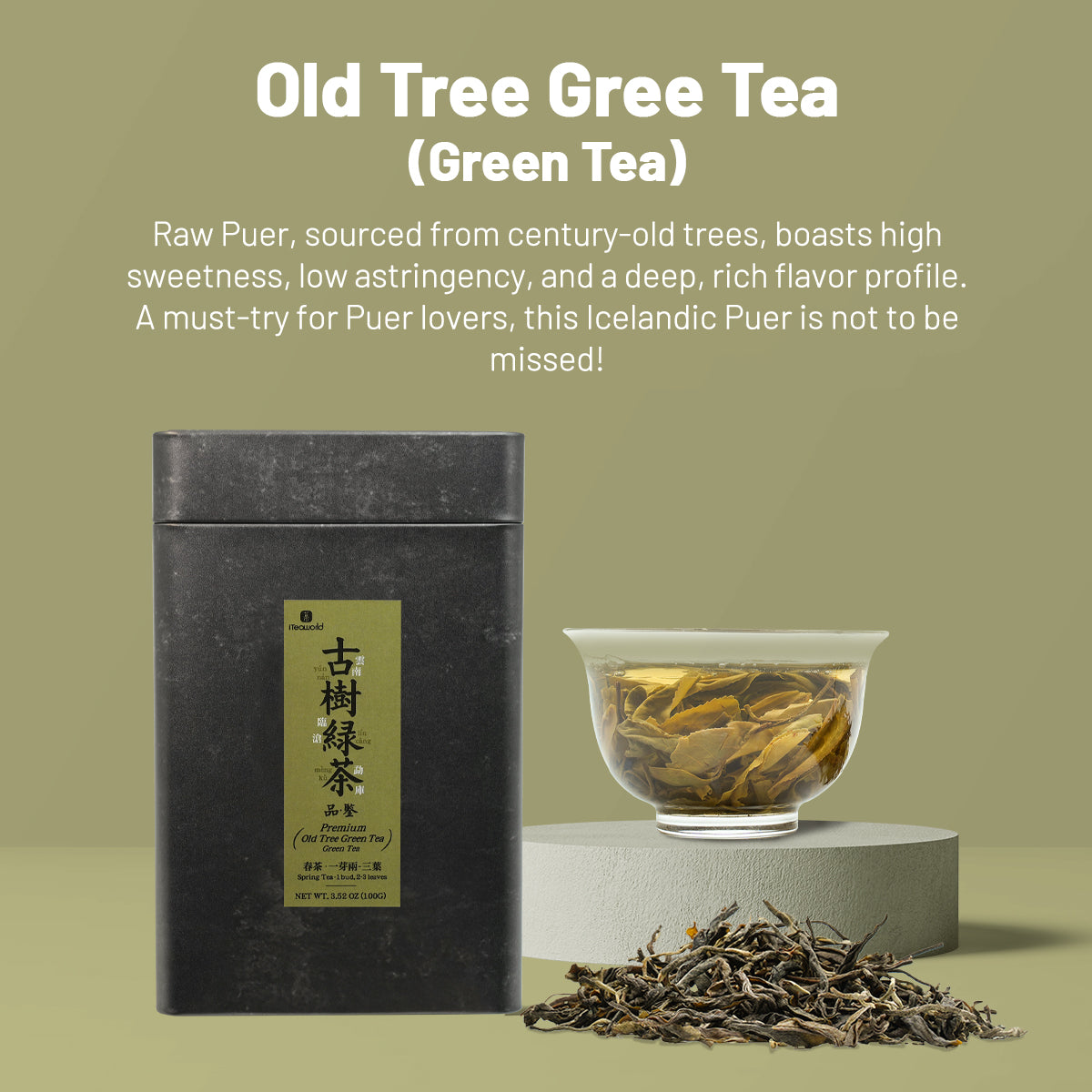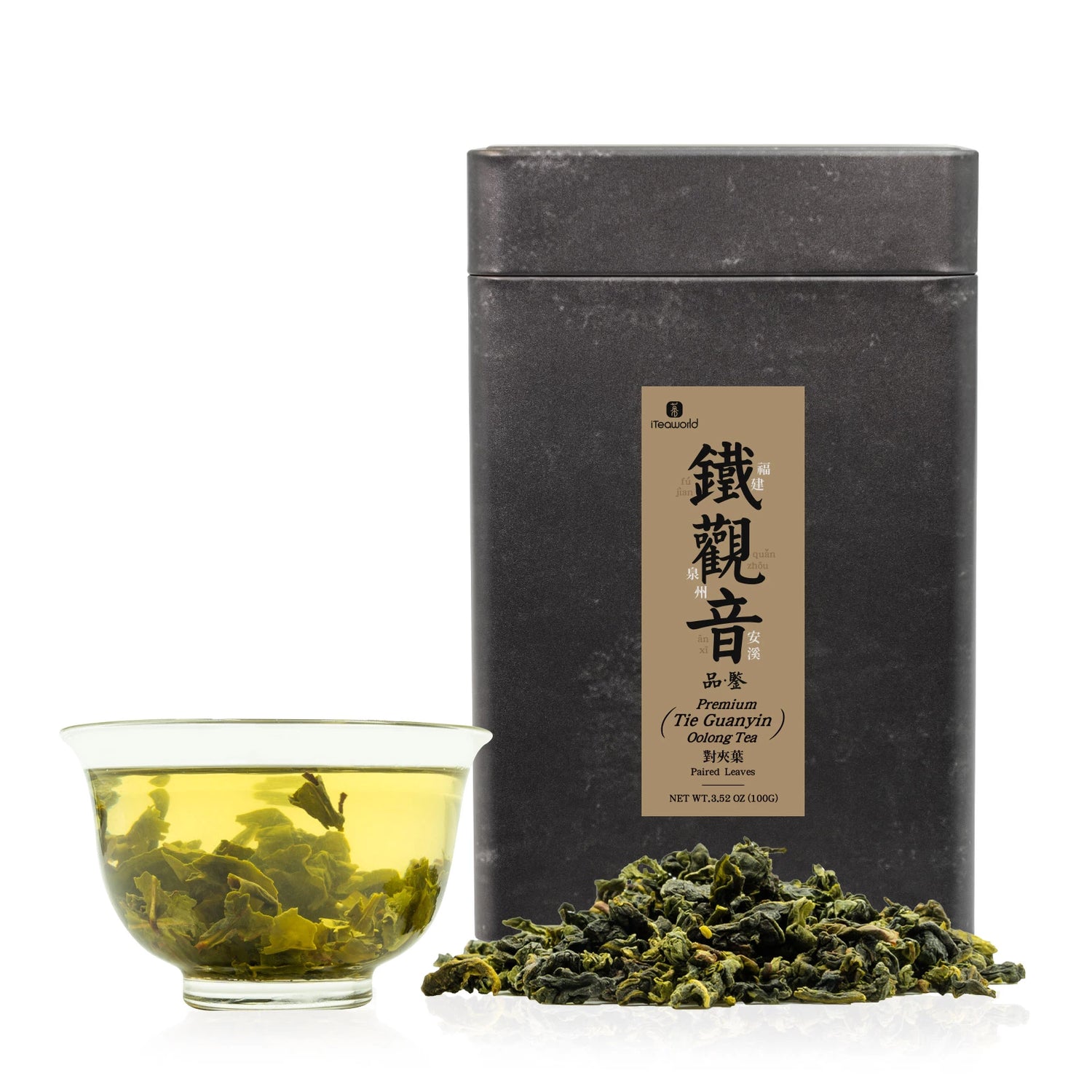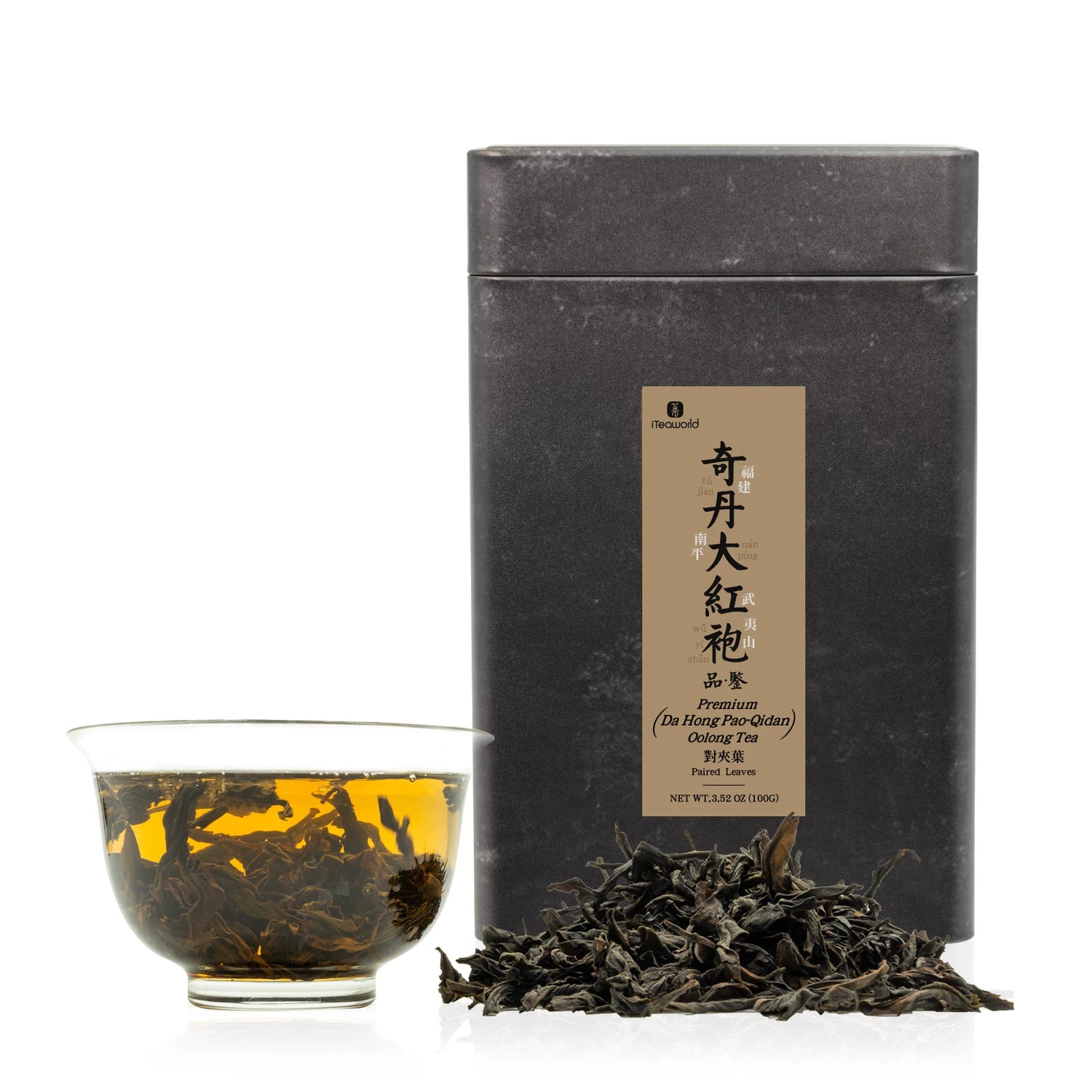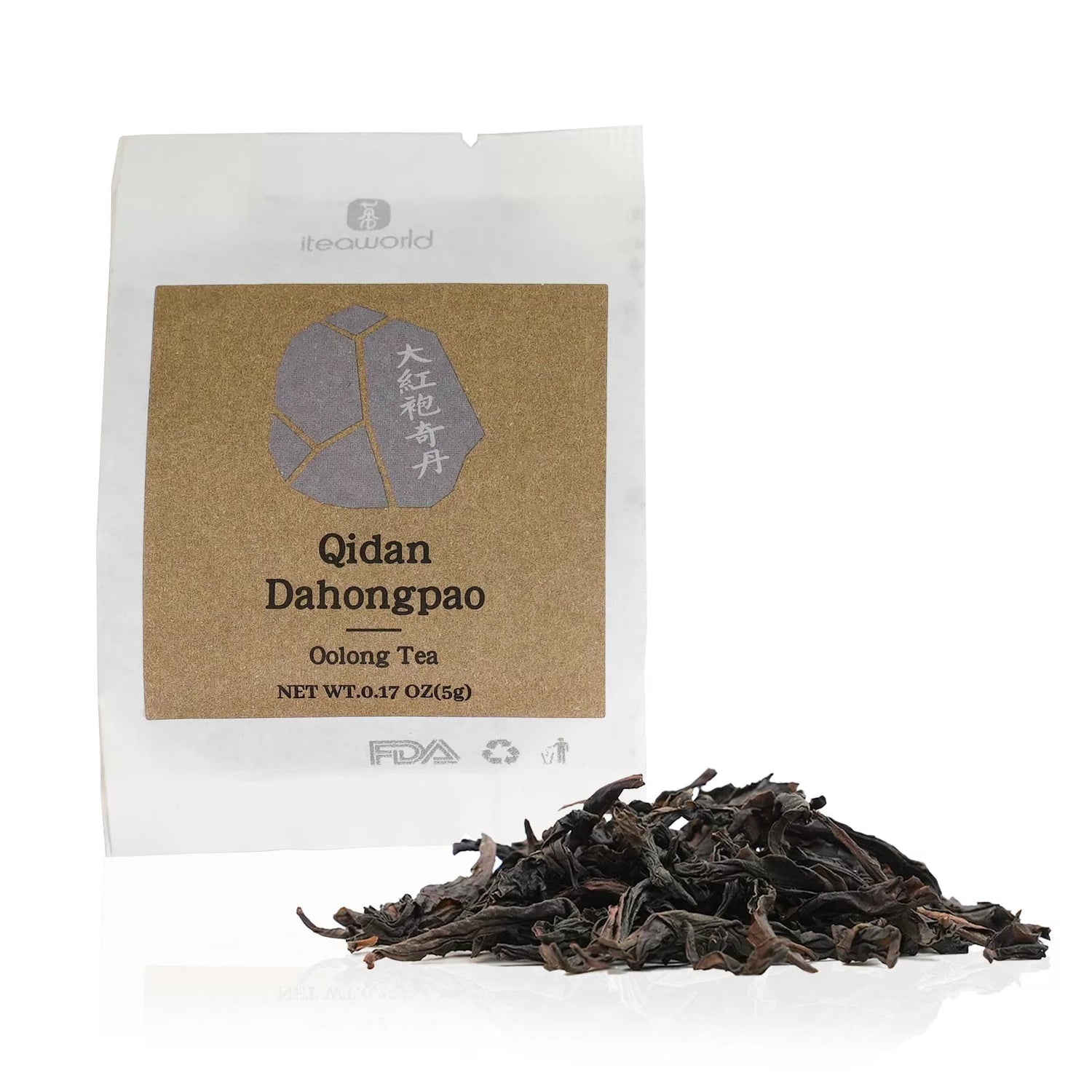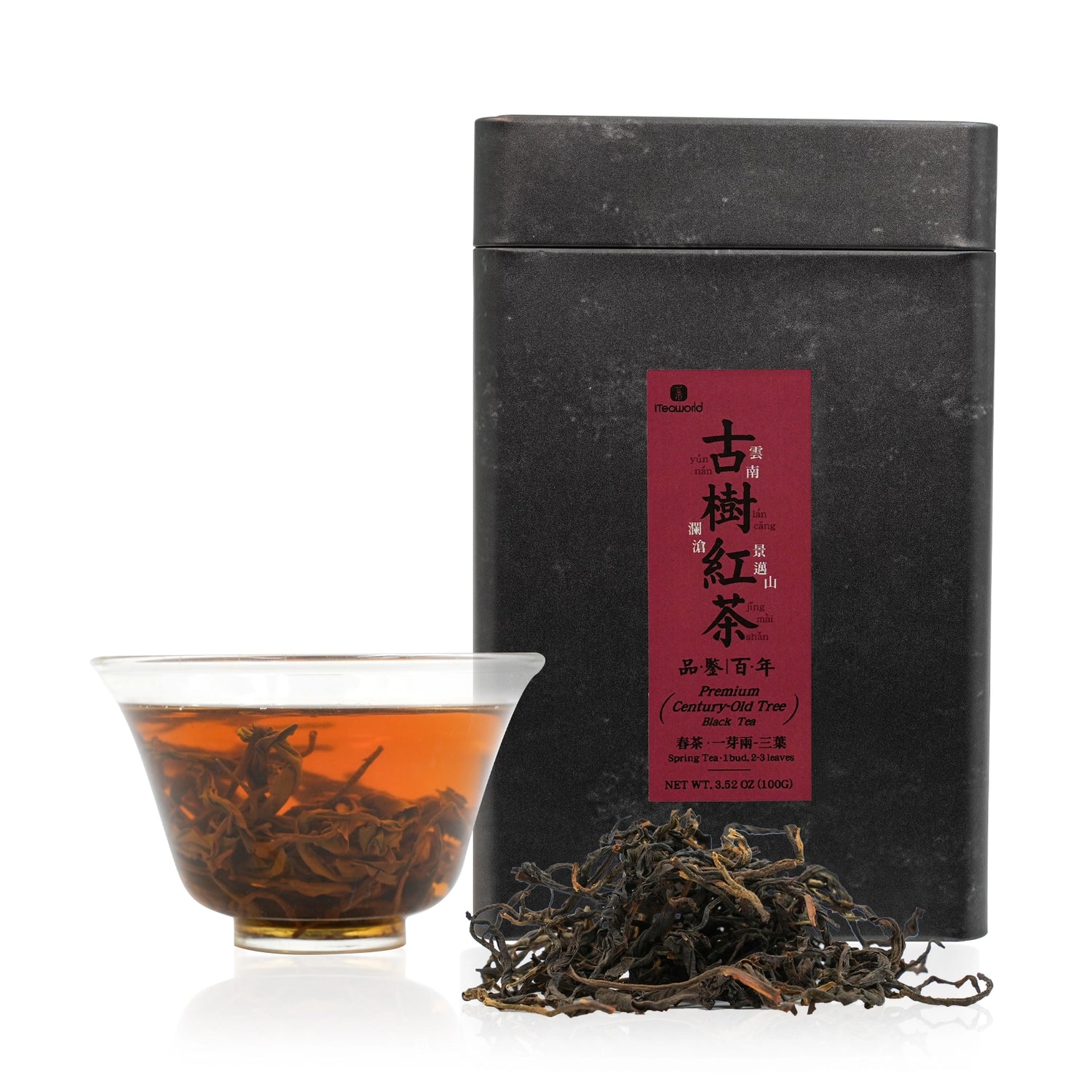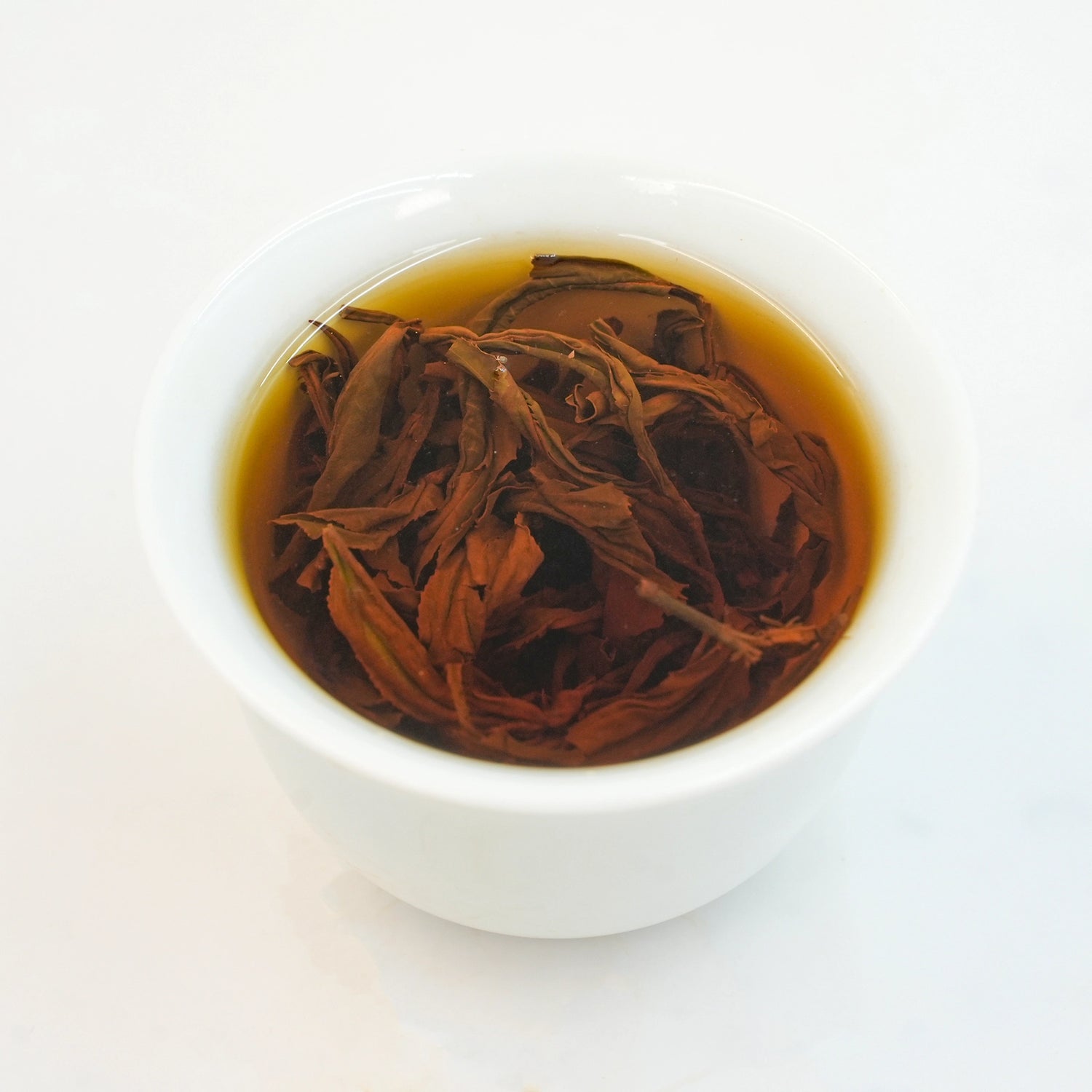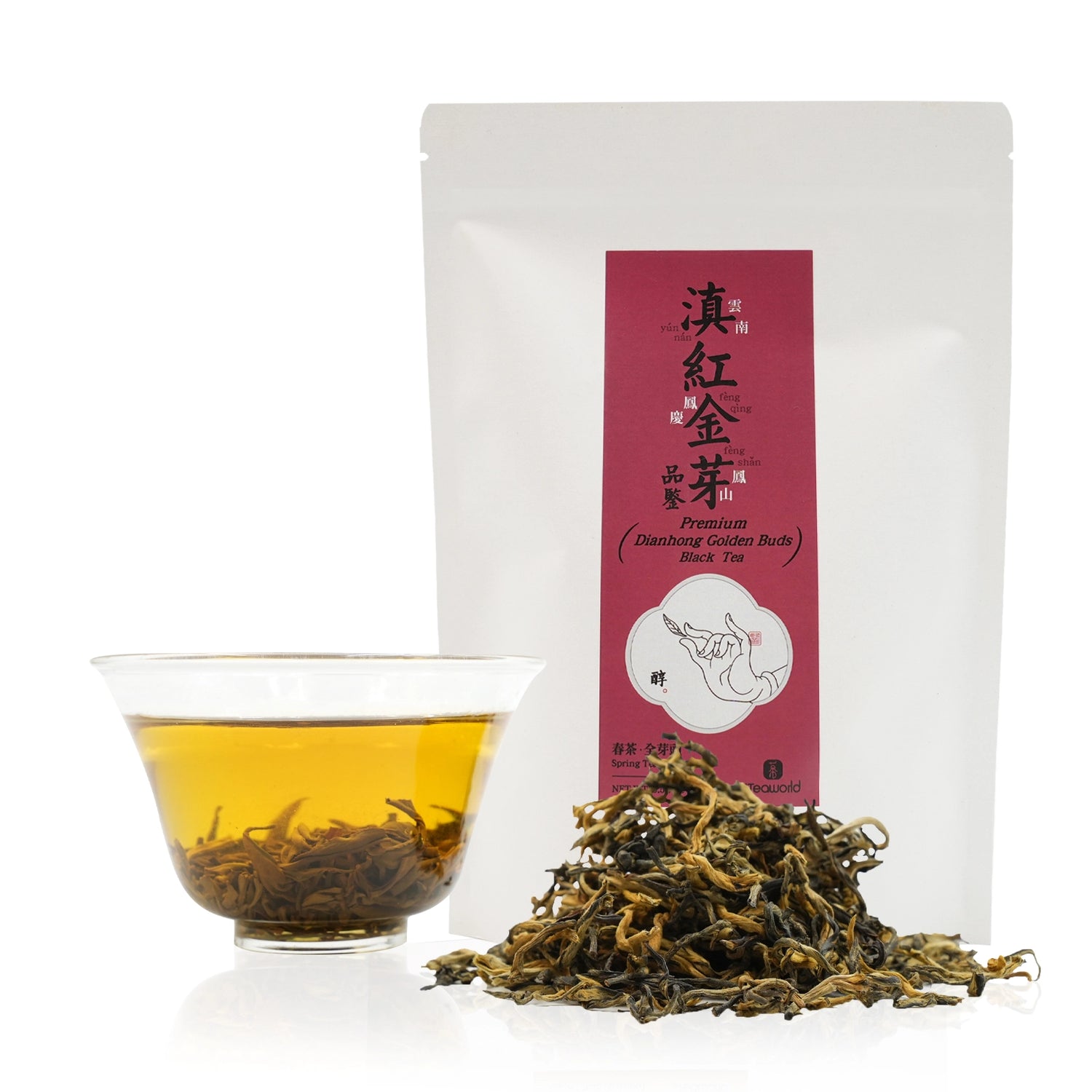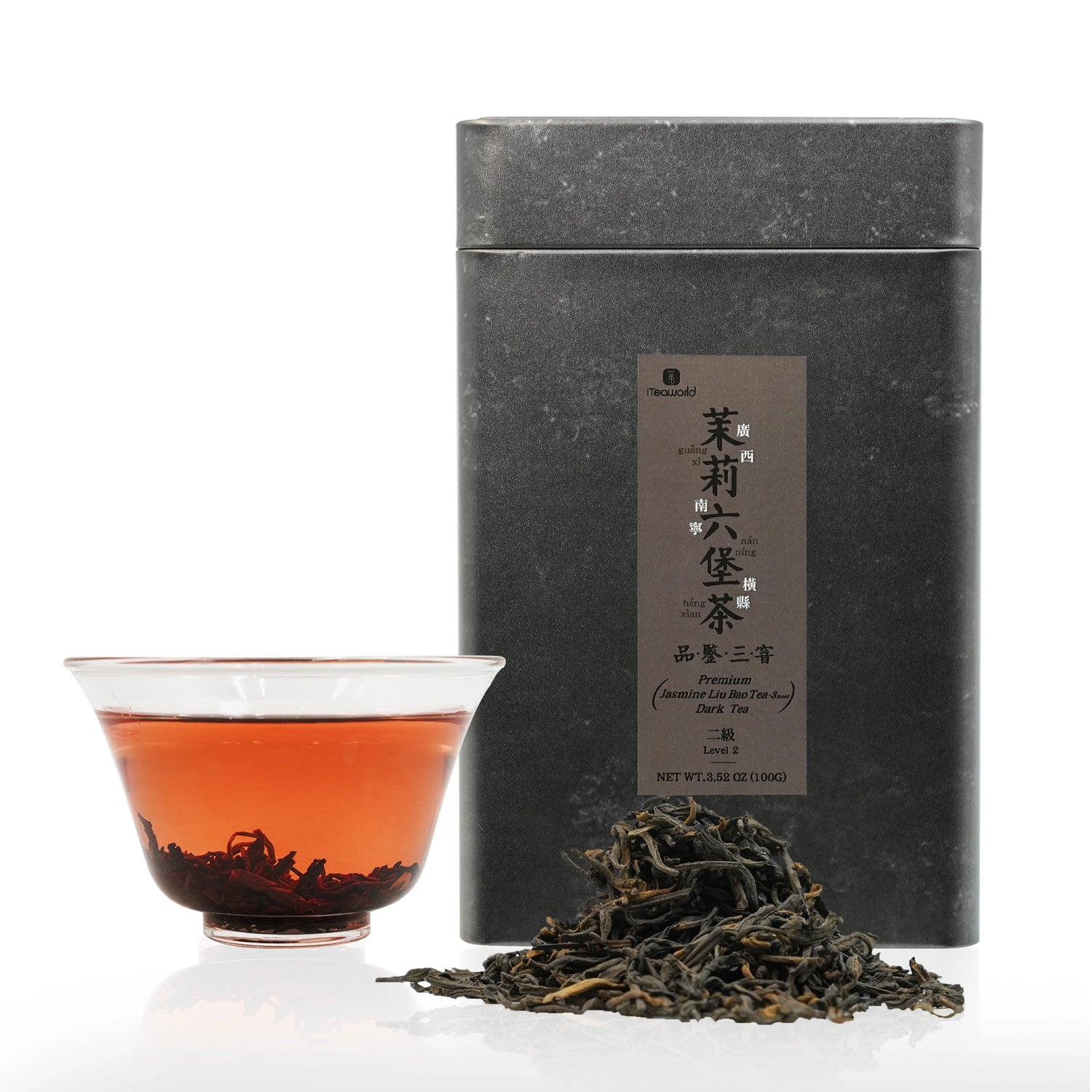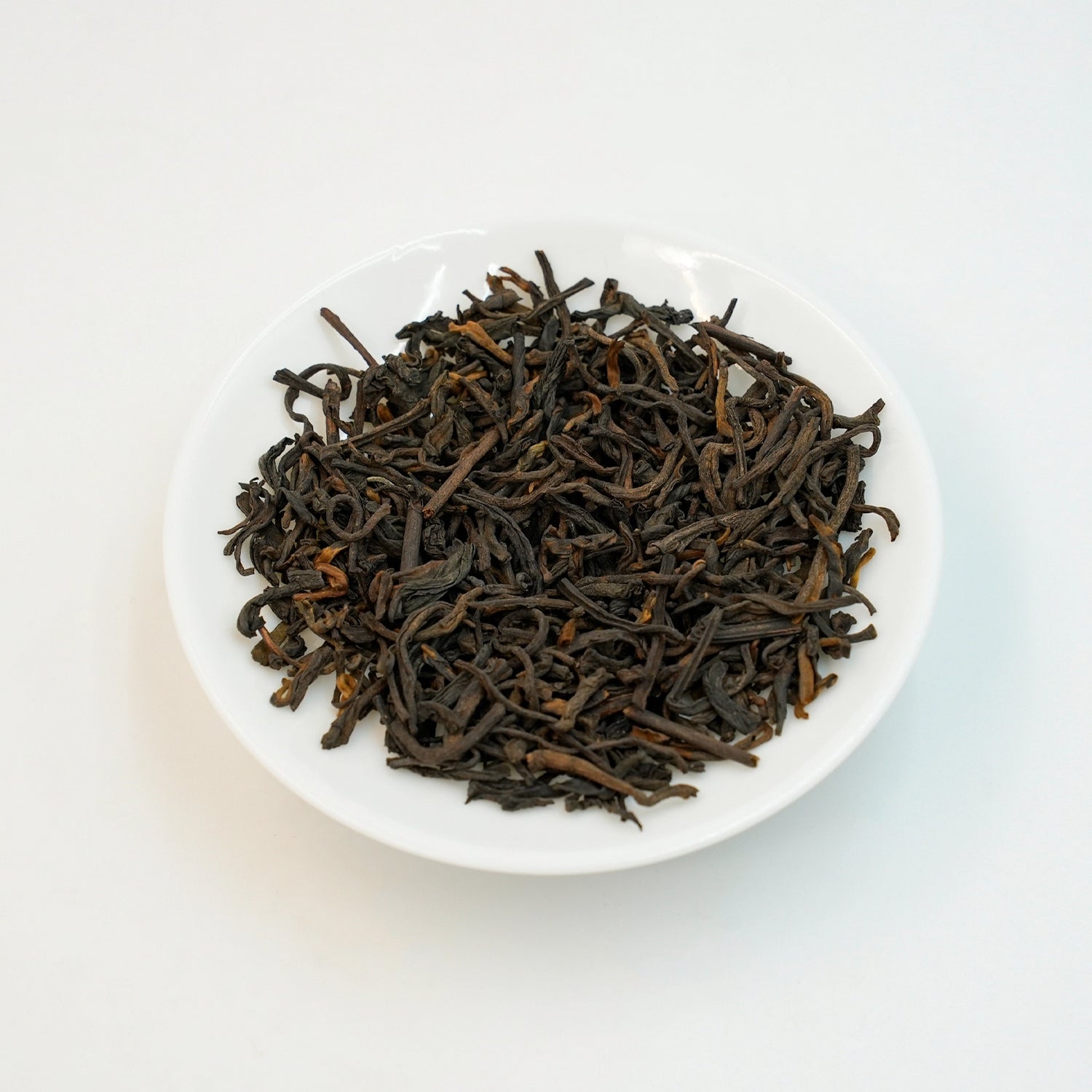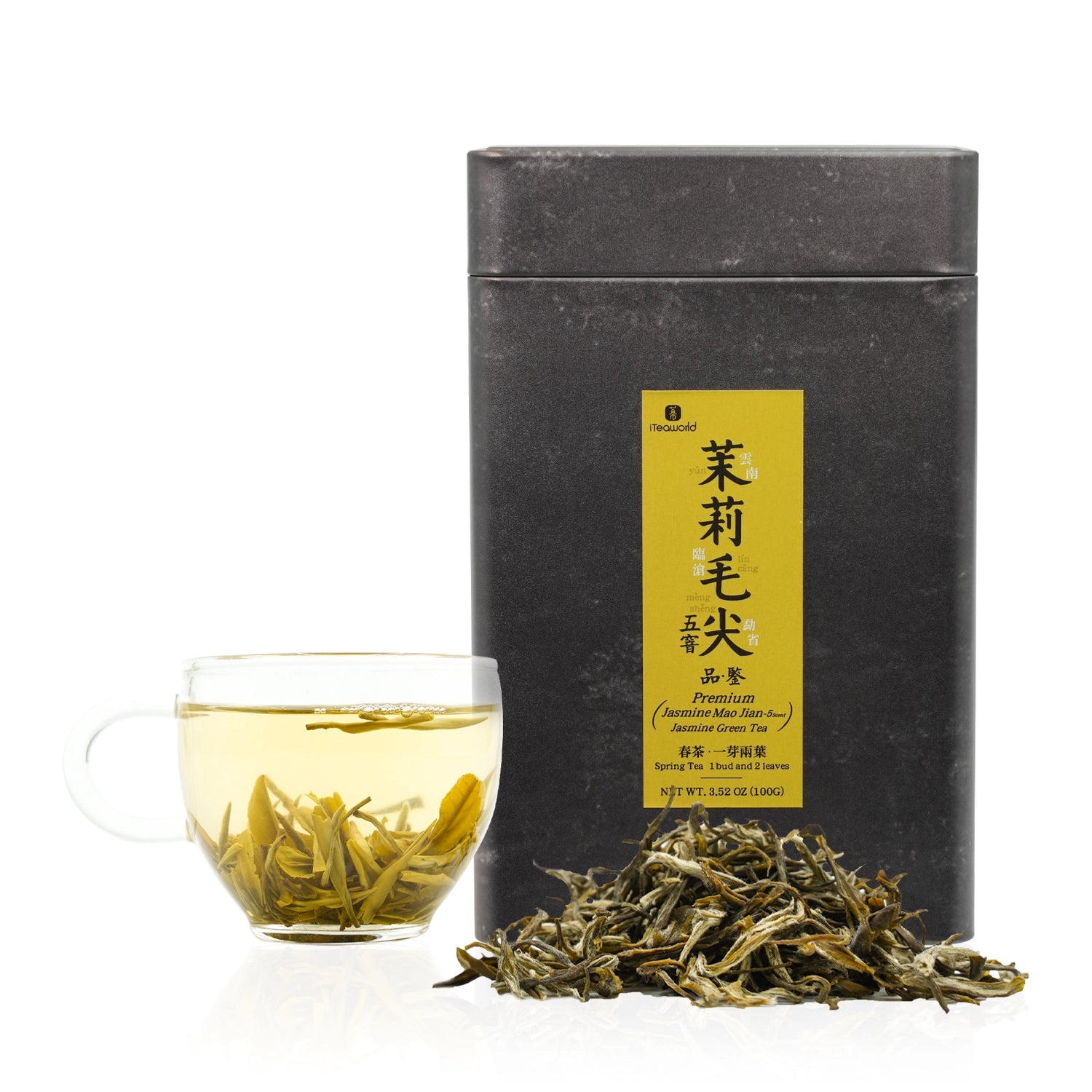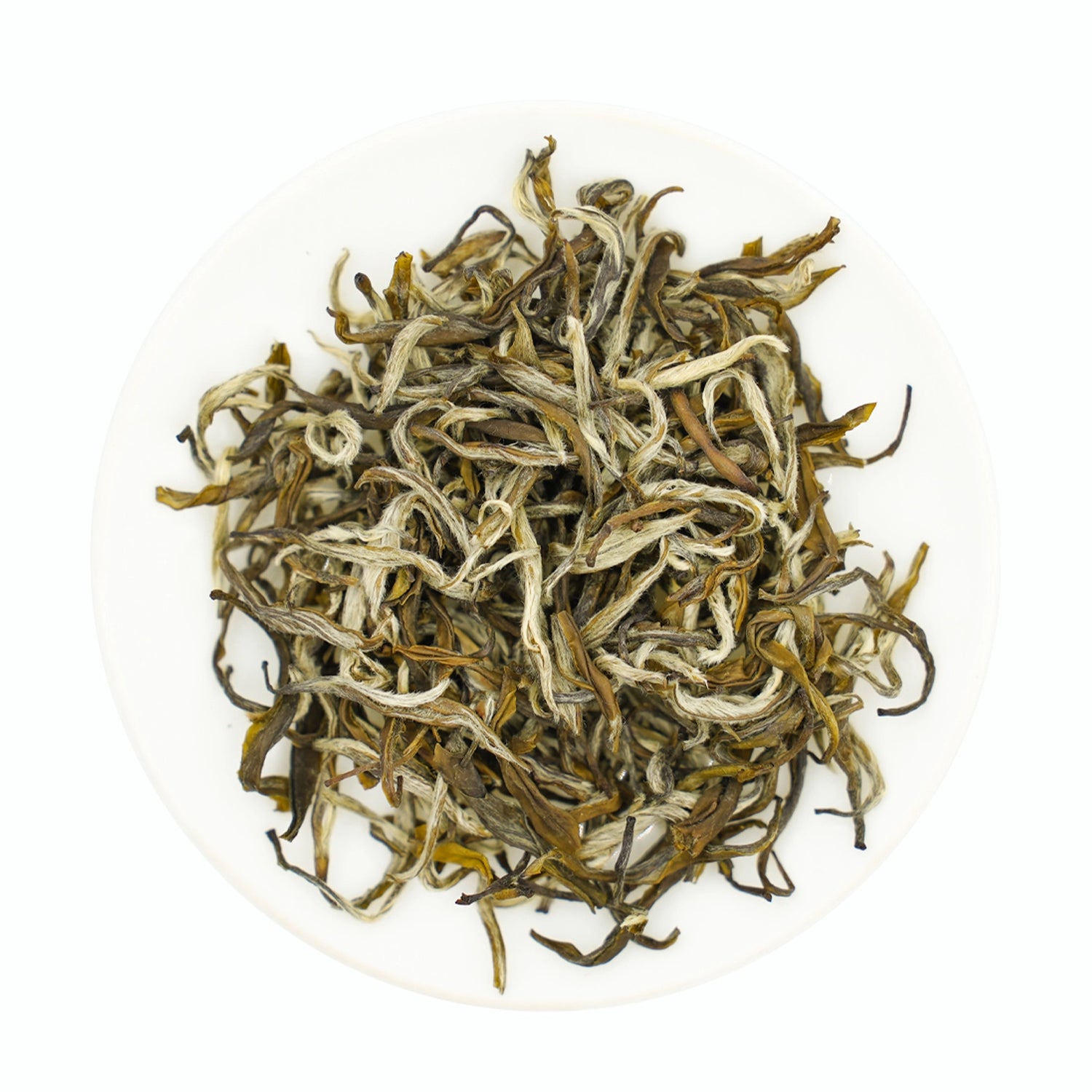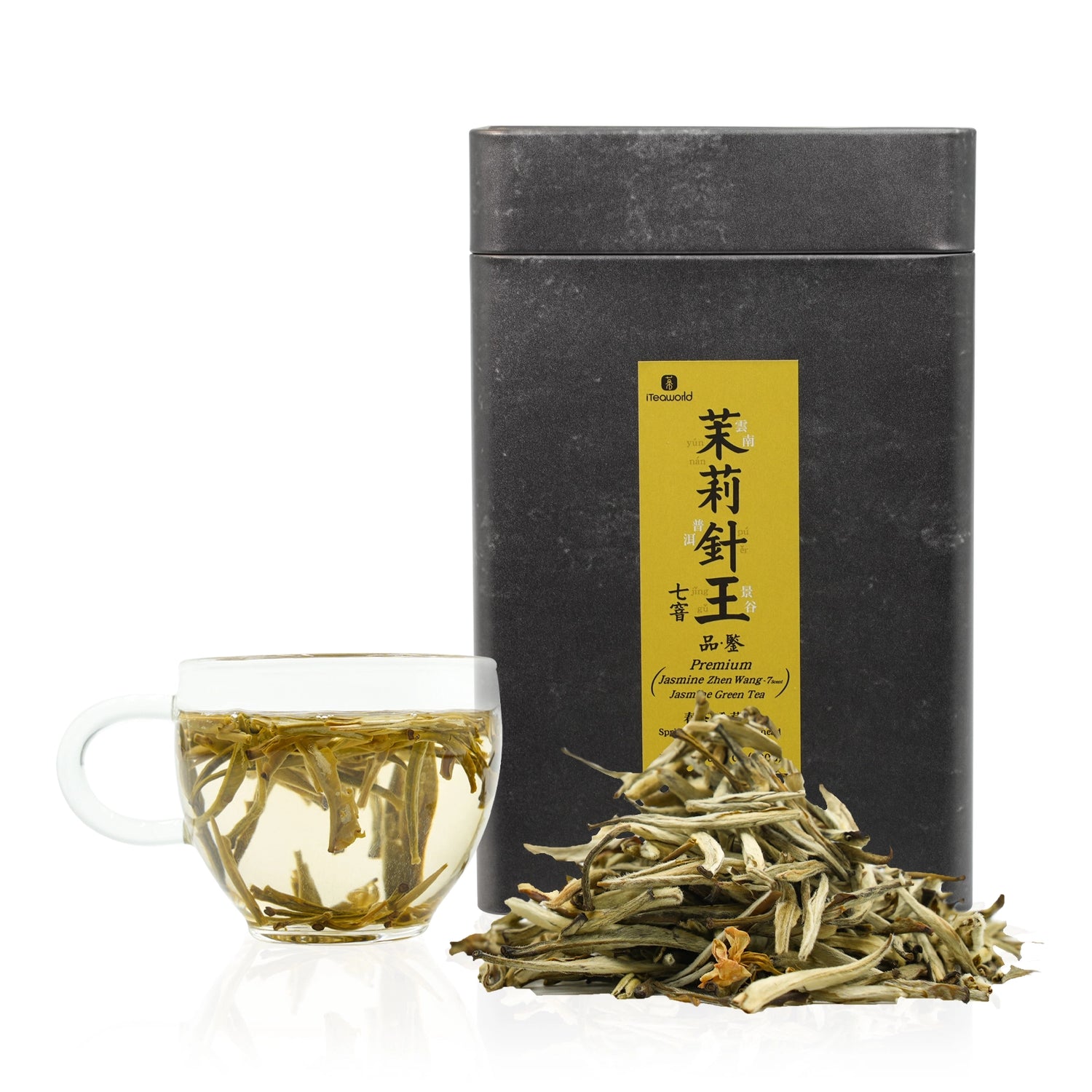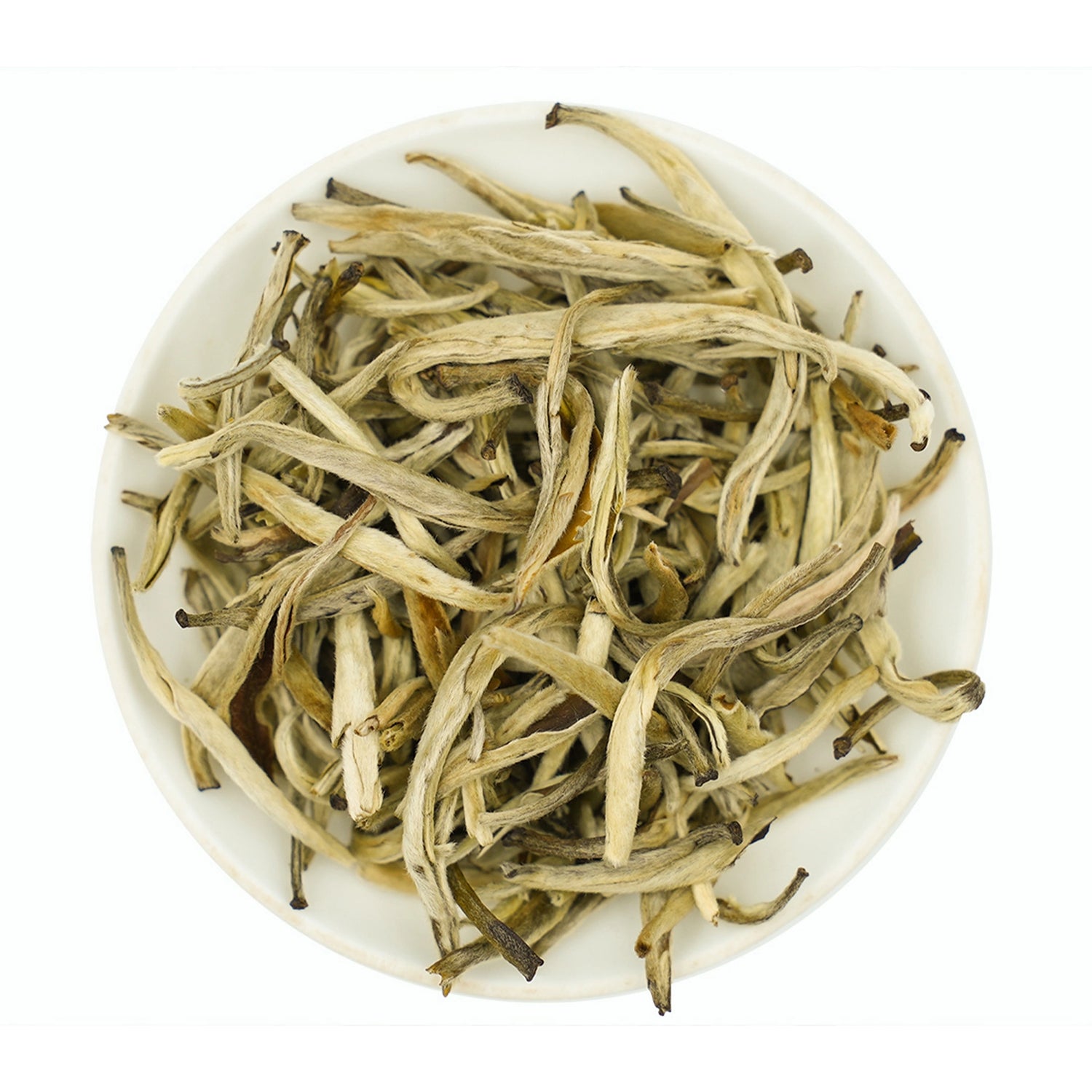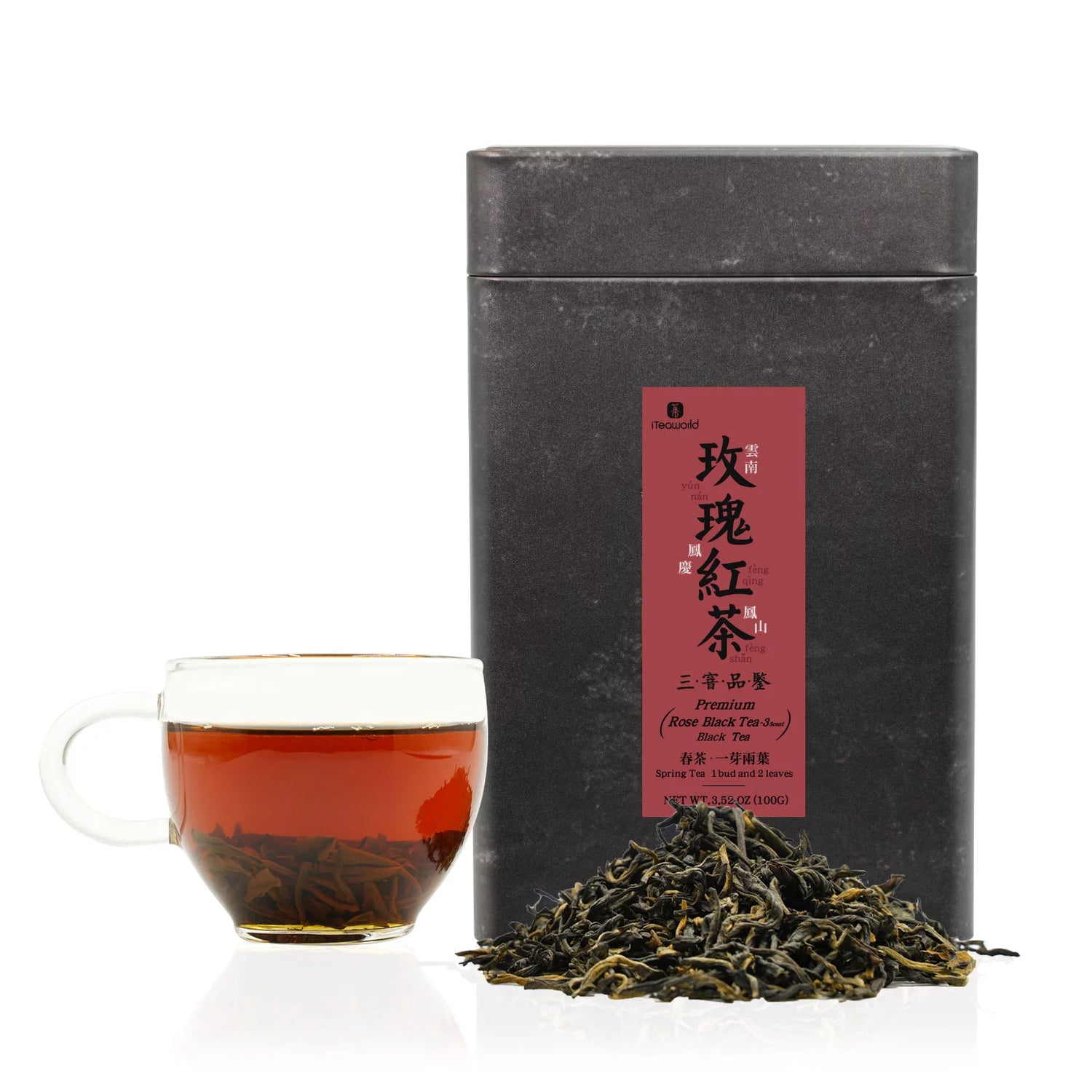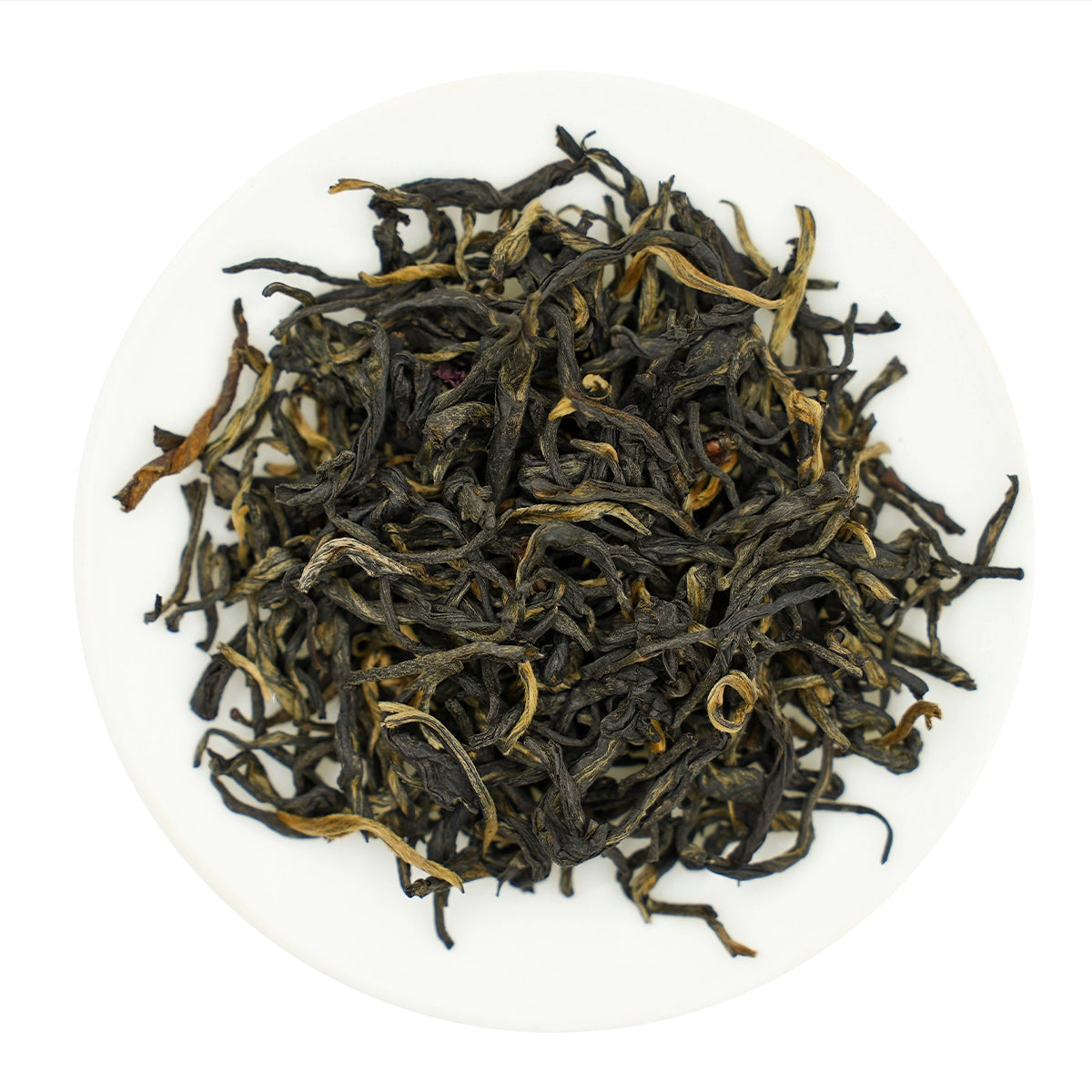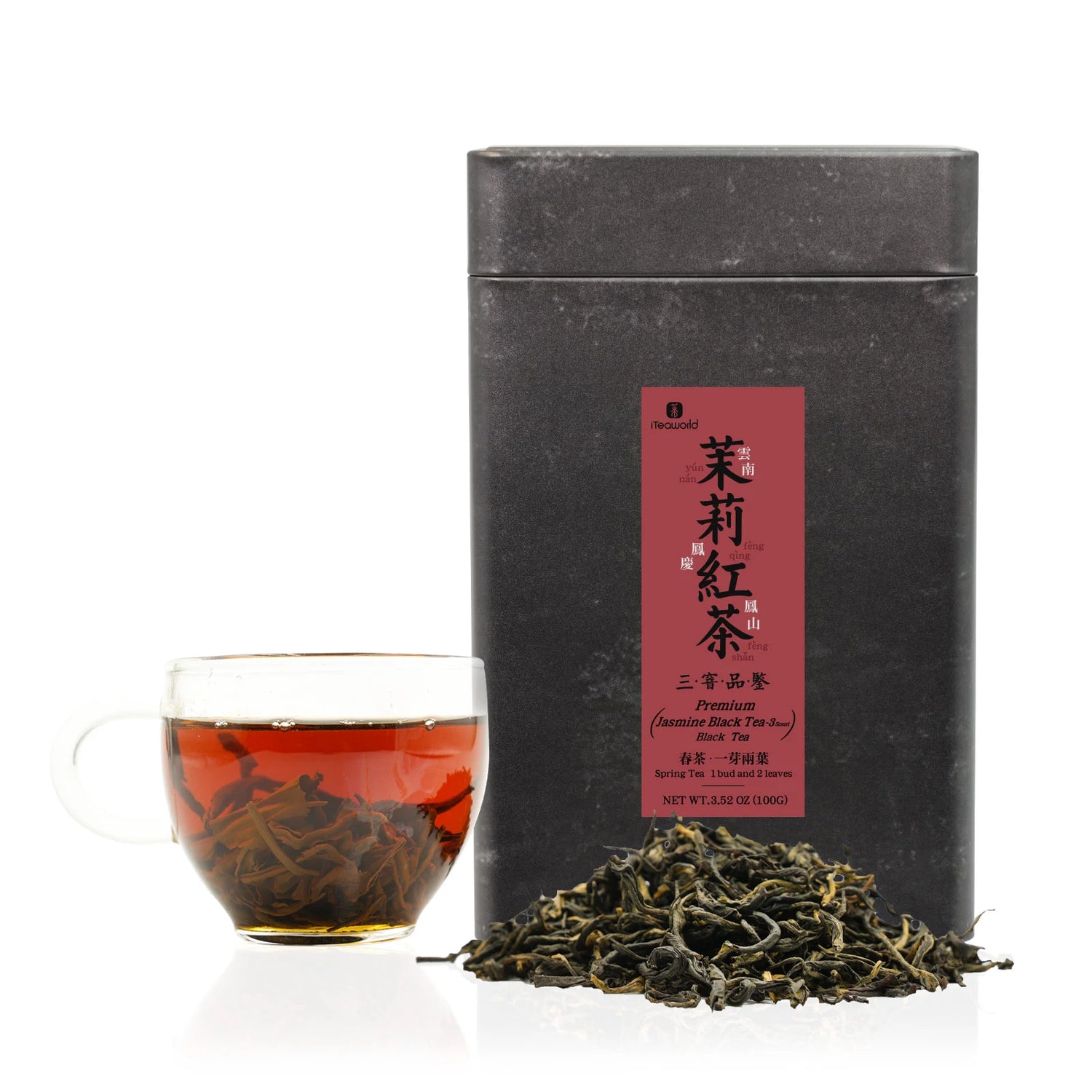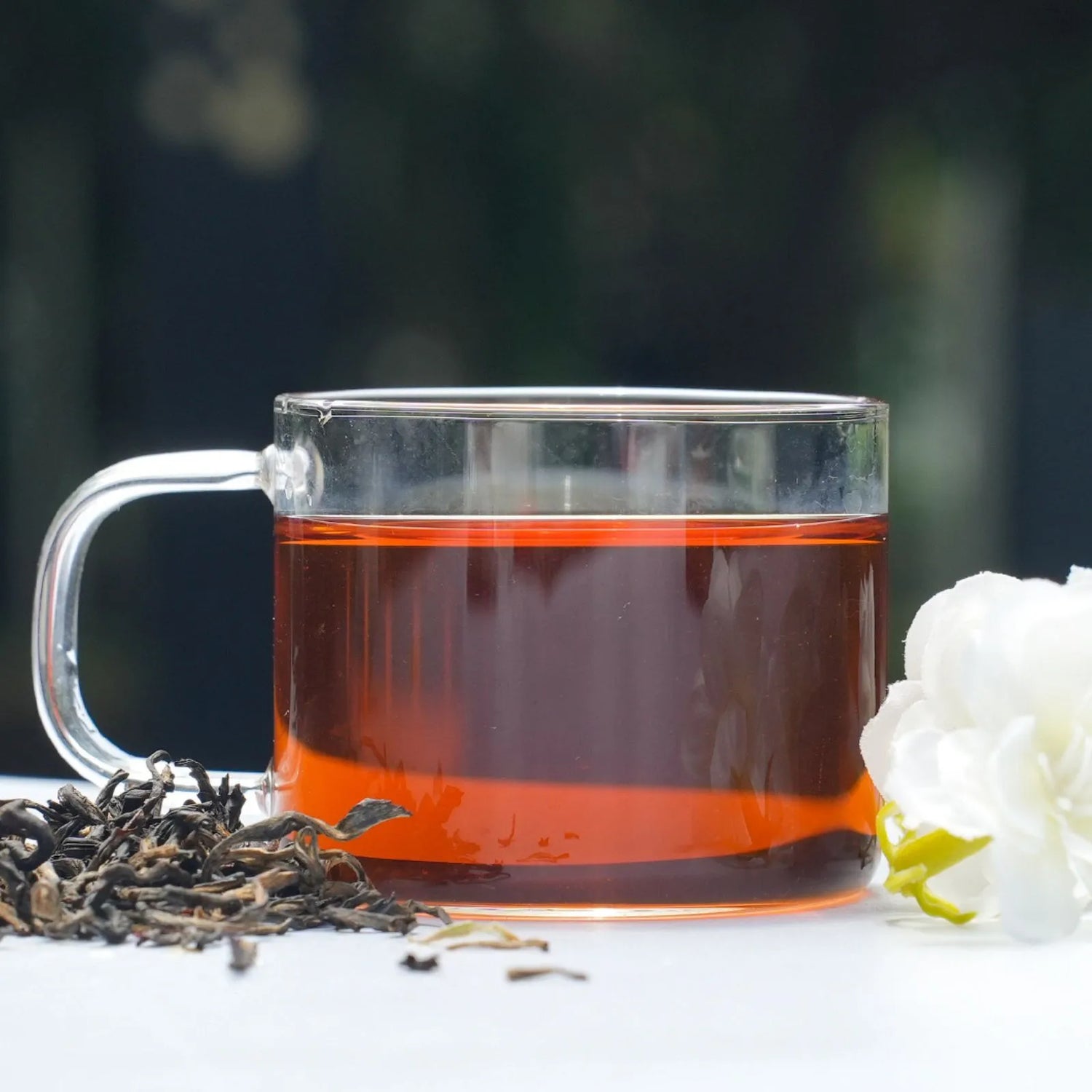Sort by:
60 products
60 products
Tasting Grade Longjing Tea Product Introduction and Reasons for Recommendation:
This Tasting Grade Longjing Tea is semi-handcrafted by Master Pan, who has 30 years of tea-making experience, and is carefully selected from the freshest pre-rain spring tea of 2024. As a traditional group variety Longjing, this tea is picked from high-altitude tea gardens in Lishui, Zhejiang, at an altitude of over 900 meters, where the superior climate conditions give the tea a more refreshing taste and rich layers of flavor. The tea is picked with buds and one to two leaves, ensuring its fresh and sweet taste, accompanied by a light and elegant fragrance.
Reasons for Recommendation:
Exquisite Craftsmanship: Master Pan has 30 years of experience in making Longjing tea, combining semi-manual techniques to ensure that each batch of tea can showcase the classic taste and unique flavor of Longjing tea.
High-Altitude Tea Gardens: Compared to other Longjing teas, this tea comes from high-altitude tea gardens in Lishui, where the superior climate conditions make the tea richer in substance, sweeter in taste, and more refreshing in aroma.
Pre-Rain Harvest: Pre-rain Longjing has tender leaves and is rich in substances, with a clear and sweet tea soup, accompanied by an elegant floral fragrance, making it a top choice among high-quality green teas.
Group Variety Tea Trees: Group variety tea trees have deep root systems, resulting in a richer taste and more lasting aroma. Compared to the Longjing 43 variety, Longjing tea made from group variety tea trees is more resistant to brewing, and the tea soup has a richer taste.
Suitable for:
Consumers who pursue high-quality green tea and pay attention to cost-effectiveness.
People who like the fresh and sweet taste of Longjing and want to experience the authentic flavor of the group variety Longjing.
Not Suitable for:
Tea lovers who prefer a richer and fuller taste may find this Longjing too subtle.
If you are only looking for the core production area West Lake Longjing, this Lishui Longjing may not be within your consideration.
Whether you are looking to experience high-quality Longjing or to find an affordable and authentic green tea, this Tasting Grade Longjing Tea will be an ideal choice.
Biluochun is one of China's most iconic green teas with a legacy that spans a thousand years. It's renowned for its unique floral and fruity aroma, often hailed as the most fragrant tea among greens. Traditional Biluochun tea gardens interplant fruit trees with tea bushes, allowing the leaves to naturally absorb a rich bouquet of floral and fruity scents, creating Biluochun's distinctive fresh and natural fragrance.
Our connoisseur-grade Biluochun is handpicked from the collective species (Jiu Keng variety) tea garden in Jiangdong Village, Tongguan Village Committee, Daibu Town, Liyang City, Jiangsu Province. The tea is personally crafted by Master Zhang, who has 30 years of tea-making experience. He adheres to the most traditional hand-crafting techniques to ensure that each leaf embodies the authentic flavor profile of Biluochun. Master Zhang's Biluochun boasts a distinct floral and fruity aroma, a long-lasting aftertaste, and a refreshing spring vibe with a delicate mouthfeel.
This tea is harvested before the rain, selecting the high-grade one bud and one leaf tea materials. The leaves are plump and tender green, and the tea soup is clear in color with a fresh sweet taste, almost devoid of astringency. Although its flavor and quality are on par with products from the core production area, the price is only half to one-third of the core origin products, making it a Biluochun tea with both high quality and great value for money.
Reasons to recommend:
Unique floral and fruity aroma: Biluochun's signature scent comes from the interplanted fruit trees in the tea garden. The dry tea has a natural, light aroma that becomes more pronounced upon brewing, making it especially suitable for tea enthusiasts who prefer a subtle fragrance.
Traditional handcrafting: This tea is handmade by Master Zhang with 30 years of experience, ensuring that the shape and flavor of each tea leaf are perfectly preserved. Handcrafted tea has a more delicate taste and a long, lingering aftertaste.
Great value: Although the tea comes from the surrounding high mountain tea gardens of the core production area, the quality is comparable to the authentic origin, but the price is only half to one-third of the tea from the core production area, making it suitable for consumers who pursue value for money.
High-grade picking: The tea is picked according to the high-grade standard of one bud and one leaf, especially before the rain, ensuring the tenderness and fresh taste of the tea leaves, and the tea soup is clear and bright.
Not recommended for:
Tea enthusiasts who prefer a strong roasted flavor: If you like the strong roasted flavor or bean flavor brought by the pan-frying process of Longjing or Biluochun, the floral and fruity aroma of this Biluochun may not meet your taste preferences.
Consumers with a limited budget: Although this tea offers great value, there may be cheaper options for consumers who are solely focused on price.
In summary, if you're looking for traditional craftsmanship, high quality, and a unique flavor profile, and you're fond of Biluochun's distinctive floral and fruity aroma, this connoisseur-grade Biluochun is an ideal choice for you.
Origin of Biluochun
-
Location: Liyang, Zhejiang Province, China
-
Picking Standard: One bud with one leaf
-
Tea Cultivar: Jiu Keng Variety — a local group small-leaf cultivar from Dongting Mountain
-
Tea Tree Age: Approximately 60 years
This Huangshan Maofeng green tea is carefully selected from the renowned high-mountain tea-growing regions of China, harvested from ancient tea trees over 60 years old, thriving in gravelly soil at an altitude of 800 meters. Recognized as one of the top ten famous teas in China and listed as a national intangible cultural heritage, its traditional craftsmanship is personally overseen by the experienced tea master, Master Yu. He adheres to the philosophy of traditional craftsmanship and hand refinement, combining high-quality raw materials to create this high-quality, affordable Huangshan Maofeng green tea.
Compared to the common Longjing tea, Huangshan Maofeng does not have the bean and chestnut aromas of Longjing but focuses more on the natural fragrance, orchid scent, and sweetness of the green tea itself, without any seaweed flavor. Its taste is fresh and elegant, and the tea soup presents a clear greenish-yellow, offering a very pure high-mountain tea experience.
Why choose this Huangshan Maofeng?
Top-shelf ingredients: Harvested from 60-year-old tea trees planted in high-altitude (800 meters) gravelly soil, these conditions endow the tea leaves with rich minerals and a unique sweet orchid aroma.
Traditional craftsmanship: Made by an experienced tea master using traditional drying techniques, preserving the natural aroma and taste of the tea leaves.
Great value: Despite its top-tier ingredients and traditional craftsmanship, this Huangshan Maofeng is priced at half the cost of similar Longjing teas, making it ideal for consumers who pursue high quality on a budget.
Suitable for tea enthusiasts who:
Enjoy exploring niche high-quality green teas: Huangshan Maofeng is a niche tea in the Western market, with a unique fragrance and orchid scent, perfect for tea lovers who like to try new types of tea.
Prefer green teas without the seaweed flavor common in steamed green teas: Huangshan Maofeng is more refreshing and natural.
Seek value for money in green tea: This tea is affordable yet does not compromise on quality, especially suitable for those who wish to savor top-tier green tea within their budget.
Not suitable for tea enthusiasts who:
Prefer strong pan-frying aromas or the bean and chestnut scents of Longjing tea, as Huangshan Maofeng has a milder and fresher flavor profile.
Seek very strong or full-bodied tea soup, as Huangshan Maofeng has a lighter color and softer taste, not providing an intensely robust experience.
By choosing this Huangshan Maofeng, you will taste a Chinese high-mountain green tea that combines high quality with great value, experiencing the true beauty of traditional handcrafted tea art.
Origin of Huangshan Maofeng
Location: Huangtian Village, Huangtian Township, She County, Huangshan City, Anhui Province, China
Picking Standard: One bud with two leaves
Tea Cultivar: Huangshan Large-leaf Variety
Tea Tree Age: Approximately 60 years
Enshi Yulu is a long-standing Chinese green tea made with the traditional steaming process, making it the only green tea in China that still uses this ancient method. The steaming technique was passed from China to Japan during the Tang Dynasty and has since become the main process for Japanese green tea. With its unique seaweed aroma, similar to Japanese sencha, Enshi Yulu retains the essence of traditional Chinese tea making.
Our Enshi Yulu comes straight from the heart of its production area, the Banqiao Dong Autonomous Township in Enshi, Hubei, China. The tea leaves are personally handpicked and crafted by Master He, a tea farmer with over 20 years of experience. His garden grows local Enshi tea varietals, and he selects only the highest grade of one bud and one leaf to ensure every sip is fresh, rich, and sweet without astringency, accompanied by a slight seaweed flavor. Most importantly, this tea is naturally rich in selenium, an essential trace element that can boost immunity, combat oxidation, and help lower blood pressure. Enshi, known as the "Selenium Capital of the World," offers these health benefits through its tea.
Reasons to choose Enshi Yulu:
Unique craftsmanship and historical legacy: For tea enthusiasts who love to explore traditional tea culture, Enshi Yulu offers a taste of China's oldest steaming process with a seaweed aroma reminiscent of Japanese green tea. Consumers who appreciate the flavor profile of Japanese sencha will also enjoy the distinctive taste of the steaming process.
Great value for money: We've selected a mid-range Enshi Yulu that maintains the quality of the core production area and authentic craftsmanship while being affordable. It's a fantastic green tea with a high cost-performance ratio, perfect for those who seek quality without breaking the bank.
Health benefits: Rich in selenium, Enshi Yulu offers antioxidant properties and can enhance immunity, making it ideal for health-conscious tea drinkers.
Cultural charm: This tea is from the ethnically diverse Enshi region, home to the Dong, Tujia, and Miao ethnic groups, among others. Interested consumers can even visit Enshi to experience the unique culture and natural environment firsthand.
Not recommended for:
Tea lovers who prefer the strong, pan-fried aroma of roasted green teas like Longjing or Biluochun, as Enshi Yulu does not have those flavors.
Those who dislike the seaweed aroma: If you're not a fan of the fresh, oceanic scent that comes from the steaming process, Enshi Yulu might not be your cup of tea.
Whether you're interested in traditional craftsmanship, health benefits, or great value, Enshi Yulu is an ideal choice for you.
Origin of Enshi Yulu
-
Location: Bajiang Dong Ethnic Township, Enshi, Hubei Province, China
-
Picking Standard: One bud with one leaf
-
Tea Cultivar: Enshi Small-leaf Variety
Xinyang Maojian is a standout Chinese green tea from the heart of its production area in Xinyang, Henan Province. Sourced from the beautiful Yangjiashan Gaoludian Ecological Tea Garden in the Dabie Mountains, this tea is grown at an altitude of 900 meters, away from pollution and surrounded by stunning scenery.
This high-quality tea consists mainly of one bud and one leaf, with each leaf covered in fine white down—an indicator of its premium quality. We work with Master Yang, a trusted tea farmer with over 20 years of experience in growing and crafting this tea.
Harvested on April 20, 2024, this spring tea brings vibrant flavors and aromas that tea lovers adore. Each sip captures the pure essence of nature, blending quality with tradition. Made from local Xinyang tea plants, it’s richer in nutrients and offers a more complex taste compared to other varieties.
Why choose Xinyang Maojian?
Authentic Craftsmanship: This tea is a true reflection of China's deep tea culture, crafted by skilled artisans who stick to traditional methods. It's perfect for anyone who has a taste for genuine flavors.
Great Value: We've handpicked a mid-range Xinyang Maojian that delivers premium quality without the premium price tag. It's an excellent choice for those who want top-notch tea without breaking the bank.
Delicious Flavor: Xinyang Maojian offers an elegant aroma and a taste that's refreshingly delightful, striking a balance between subtle sweetness and a clean finish.
Natural Purity: Grown in a clean, natural environment, this tea captures the essence of its surroundings, ensuring a flavor that's pure and untainted.
High-Altitude Tea Garden: Our Xinyang Maojian comes from tea gardens at an altitude of 900 meters, where the fresh air and superior soil give the tea a unique flavor and aroma, ensuring every sip is packed with nature's essence.
One Bud and One Leaf Tenderness: We only select the highest-grade tea leaves, primarily one bud and one leaf, ensuring the tenderness and quality of the tea. This picking standard means each leaf is covered in fine white down, a sign of its superior quality.
Harvested Before Grain Rain: This tea is picked at the optimal time before Grain Rain, when the spring tea is at its most tender and the aroma and taste are at their peak. Picking at this time preserves the natural flavor and vitality of the tea leaves.
Collaboration with Professional Tea Farmers: We collaborate with Master Yang, a tea farmer with over 20 years of experience in tea cultivation and production, ensuring that each batch of tea meets high-quality standards.
Xinyang Maojian is the ideal choice for those who pursue a high-quality lifestyle and a refined tea culture experience.
Who might not enjoy it?
If you prefer bold, roasted green teas, Xinyang Maojian’s fresh and delicate profile might not be for you.
Those who like heavily flavored teas may find this one a bit too subtle.
Whether you’re interested in its rich history, great taste, or exceptional value, Xinyang Maojian is a perfect choice for anyone looking for a superior green tea experience.
Lu'an Guapian is a historic Chinese tea with a royal past, once a tribute tea reserved exclusively for the imperial family. Today, this precious green tea still maintains its unique traditional craftsmanship and flavor profile. Our connoisseur-grade Lu'an Guapian is handcrafted by a tea master with 30 years of experience, using leaves from the small-leaf variety tea plants in Lu'an, Anhui, grown at an altitude of 600 meters. Harvested in the spring, when the leaves are most tender, this tea boasts a rich aroma and a refreshing flavor, making it the optimal picking time of the year. Lu'an Guapian is selectively picked for the second leaf from the bud and two leaves, discarding the stem and the tender bud, retaining the essence of the tea leaf to ensure the purity and delicate freshness of the tea soup.
Why choose our connoisseur-grade spring Lu'an Guapian?
Top-tier tender leaves picked in spring: Harvested in the spring, these leaves are at their peak freshness, offering a more vibrant flavor, rich aroma, and a longer-lasting aftertaste with a higher degree of freshness in the tea soup.
Stem-free purity: All stems are removed, leaving only the carefully selected leaves for a purer taste, free from woody or astringent flavors, resulting in a refreshing and naturally sweet tea soup.
The freshness and aftertaste of high-mountain tea: Grown at an altitude of 600 meters, the slow growth cycle imparts a more refreshing taste and enduring aftertaste, with a rich mouthfeel and prominent chestnut aroma.
Handcrafted, preserving traditional skills: Meticulously hand-fried by a tea master with 30 years of experience, this tea retains traditional production techniques, ensuring the high quality of each leaf.
Authentic origin, unique terroir: Sourced from the core production area in Jinzhai County, Lu'an, Anhui, the small-leaf variety tea plants grow in traditional agricultural tea gardens with a history dating back to the 1960s and 1970s. The natural growth of the tea plants ensures the natural flavor of the leaves.
Reasons to recommend:
This spring Lu'an Guapian is ideal for consumers who love tender and refreshing flavors. Its spring harvest, pure tea soup, refreshing taste, and lasting aftertaste are particularly suitable for consumers who pursue a high-quality tea experience. If you're looking for a green tea with a refreshing chestnut aroma and natural sweetness, this tea will surely satisfy you.
Not suitable for:
If you prefer strong, bitter flavors or are not accustomed to the light taste of green tea, this tea may not meet your taste preferences. Additionally, as it is a high-end connoisseur-grade spring green tea, it is slightly more expensive than regular green tea, so budget-conscious consumers might consider more economical options.
Tai Ping Hou Kui is a renowned Chinese green tea from the famous production area of Huangshan in Anhui Province. This tea comes from the core region of Tai Ping Hou Kui, specifically Qiaoshan Village in Xinming Township, where unique climatic conditions—cool, moist weather and fertile soil—create an ideal growing environment.
Our premium Tai Ping Hou Kui mainly consists of one bud and three leaves, carefully selected during the harvest, which typically occurs around the Grain Rain festival. Each leaf is covered in fine white down, showcasing its exceptional quality. We collaborate with Master Yu Jianguo, a tea farmer with over 20 years of experience in growing and crafting tea, ensuring expertise in creating this exquisite beverage.
This tea is made from the traditional seed-reproducing Shi Da Ye variety, known for its late-maturing characteristics. Coupled with the high altitude of the Huangshan region, the first harvest occurs around the Grain Rain period, resulting in a batch of Tai Ping Hou Kui that delivers vibrant flavors and aromas, captivating tea enthusiasts. Each sip captures the essence of its misty mountainous origins, offering a rich, smooth mouthfeel with a delightful sweetness.
Why Choose Tai Ping Hou Kui?
Authentic Craftsmanship & Core Origin: This Tai Ping Hou Kui comes from the heart of Huangshan City in Anhui Province, ensuring that every leaf captures the unique climate and fertile soil of the region. These natural conditions create an ideal environment for the tea trees to thrive, resulting in exceptional quality.
Direct Sourcing, Great Value: We collaborate directly with local tea farmers to ensure the authenticity and freshness of our tea. This direct sourcing approach not only guarantees high quality but also allows us to offer competitive prices, giving you premium tea without breaking the bank.
Early Spring Harvest: Our Tai Ping Hou Kui is harvested right around the Grain Rain season, making it one of the first teas of spring. This timing ensures that the leaves are picked while they’re bursting with vitality, preserving their delicate characteristics and rich flavors.
High-Quality Tea Varietals: We use the traditional Shi Da Ye tea tree variety, known for its late-maturing traits. Combined with Huangshan’s unique climate, this leads to remarkable quality, ensuring every sip is filled with pure, natural essence and aroma.
Introduction:
This old Tree green tea is meticulously selected from the spring harvest of 2024. Plucked from high-altitude ancient tea gardens at elevations of approximately 1600 meters, the exceptional growing conditions impart a refreshing taste and rich, layered flavors. The plucking standard of primarily one bud and two to three leaves ensures a fresh, mellow taste with a sweet aftertaste and a delightful honey-like aroma.
Reasons to Recommend:
- Natural Flavor: Sourced from the untouched forests of Yunnan, this old Tree green tea boasts a rich, earthy flavor. Its unique, bold taste and abundant polyphenols represent a perfect blend of nature and tradition, embodying high-quality, authentic Chinese loose-leaf tea.
- Rich in Nutrients: As an unfermented and non-oxidized tea, old Tree green tea exudes a strong, earthy aroma. Rich in polyphenols and catechins, it offers a fresh, complex flavor and powerful antioxidant properties, making it ideal for those seeking a deeper connection with nature through tea.
- High-Mountain Tea Gardens: Since ancient times, high mountains shrouded in mist have produced premium teas. This tea thrives in such environments, where lush vegetation and organic-rich soil, combined with extreme daily temperature fluctuations, enhance the accumulation of flavorful compounds in the leaves.
- High Brewing Tolerance: This robust Chinese old Tree green tea retains its fresh, smooth flavor even after seven infusions.
Oxidation Level: 0%
Roasting Level: 0%
Tea Garden Soil: Red soil
Processing Time: Spring 2024
Best Before Date: Suitable for long-term storage
Tea Variety: Yunnan Big Leaf
Introduction:
This premium Tieguanyin is meticulously selected from the autumn harvest of 2023. Plucked from high-altitude tea gardens in Anxi, Fujian (the most authentic origin), the exceptional growing conditions impart a rich and robust flavor profile. Carefully crafted in small batches by professional tea farmers, this tea guarantees a smooth, mellow taste with a strong orchid fragrance.
Reasons to Recommend:
- A Renowned Chinese Tea: Anxi Tieguanyin, originating around 1725, is one of China's top ten famous teas. On May 22, 2023, Anxi Tieguanyin was awarded the "Globally Important Agricultural Heritage Systems" certificate.
- Authentic Origin: Grown in Anxi, Fujian, where the mountainous terrain and misty climate create an average annual temperature of 15-18°C, a frost-free period of 260-324 days, and annual rainfall of 1700-1900 mm. The relative humidity exceeds 78%, and the acidic red soil, rich in organic matter and minerals, contributes to the unique flavor of Tieguanyin tea trees.
- High-Altitude Tea Gardens: Compared to other Tieguanyin teas, this one is cultivated in high-altitude gardens in Anxi, where the superior climate enhances the tea's richness, delivering a smoother, sweeter aftertaste and a more intense aroma.
- Meticulous Craftsmanship: Carefully produced in small batches by skilled farmers, this tea undergoes multiple intricate processes to achieve its premium quality.
Oxidation Level: 15%-25%
Roasting Level: Light roast
Tea Garden Soil: Red soil
Processing Time: November 2024
Best Before Date: 36 months
Tea Variety: Tieguanyin
Introduction:
This Qidan Da Hong Pao is meticulously selected from the spring harvest of 2023. Sourced from the purest Wuyi rock tea in Wuyi Mountain, Fujian (the most authentic origin), the exceptional growing conditions and specific cultivar impart a truly authentic flavor profile. Crafted by master tea maker Chen Hai, who has decades of experience, this tea guarantees a rich, sweet aftertaste with a subtle osmanthus fragrance.
Reasons to Recommend:
- Core Production Area: Grown in the heart of Wuyi Mountain, Fujian, where the average annual temperature ranges from 16°C to 25°C, the frost-free period lasts 253-272 days, and annual rainfall is around 2000 mm. The relative humidity is 78%-84%, and the acidic red soil, rich in organic matter and minerals, contributes to the unique flavor of Da Hong Pao tea trees.
- Pure Cultivar: The mother trees of Da Hong Pao grow on the steep cliffs of Jiulongke in the Wuyi Mountain Nature Reserve. Due to their limited yield and exceptional quality, the purebred Da Hong Pao is propagated asexually from cuttings of these mother trees and processed separately.
- High-Altitude Tea Gardens: This tea is cultivated in high-altitude gardens in Wuyi Mountain, where the superior climate enhances the tea's richness, delivering a fuller, sweeter aftertaste and a more intense, lingering aroma with a pronounced "rock essence."
- Unique Roasting Process: Premium tea leaves are slowly roasted under gentle heat, developing a sweet fragrance with a subtle smoky undertone.
Oxidation Level: 45%-55%
Roasting Level: Light to medium roast
Tea Garden Soil: Sandy gravel soil
Master Blender: Chen Hai
Processing Time: Initial processing in May 2024, refined in September 2024
Best Before Date: 36 months
Tea Variety: Qidan
Buying Guide:
This 2024 Yunnan Ancient Tree Black Tea is crafted from century-old small-leaf tea trees in the scenic Jingmai Mountain. It boasts an intense, long-lasting aroma with layers of floral and honey notes. The tea liquor is full-bodied and deep, with a lingering sweet aftertaste. Perfect for tea lovers who appreciate the refined complexity of black tea, especially those drawn to the unique flavors and steeping endurance of ancient tree teas. If you're looking for a natural and pure tea experience, this tea is an ideal choice.
Key Details About Ancient Tree Black Tea:
Origin: Jingmai, Pu'er, Yunnan
Harvest Date: April 2024
Leaf Grade: One bud with two leaves
Tea Tree Variety: Small-leaf tea trees
Tea Master: Zhu Yafen, Jingmai Mountain
Flavor Profile: The tea liquor delivers a strong, lasting aroma and a smooth mouthfeel. Jingmai tea is known for its distinctive fragrance that lingers in the tea liquor. The blend of floral and honey aromas creates a dynamic experience, with the scent lingering in your mouth long after sipping.
Storage:
Keep sealed, dry, and away from light or odors. For longer preservation, store in a cool environment. Best enjoyed within two years.
Why Ancient Tree Black Tea Stands Out
Ancient tea trees, often over 100 years old, grow in remote, pristine mountain forests, free from synthetic fertilizers or pesticides. Their deep roots absorb rich minerals and nutrients, resulting in tea with a full-bodied, layered flavor and natural floral or honey notes.
The leaves of ancient tree black tea are thicker and more resilient, with higher levels of polyphenols and aromatic compounds, making the tea exceptionally durable in brewing. Each steep releases consistent flavor and aroma, often lasting for many infusions.
Yunnan, home to over 56 million ancient tea trees, is known as the “kingdom of ancient tea.” With the introduction of the Yunnan Ancient Tea Tree Protection Regulation in 2023, these trees are now safeguarded to ensure their heritage continues. Ancient tree black tea is a unique gem, offering both a pure taste and a connection to centuries of tradition.
How to Brew
Water Temp: 212°F(or 100℃)
Tea-to-Water: 1g per 50ml
Steep Time: 20 sec for first 3 steeps, add 5 sec each time after
Teaware: White porcelain gaiwan
Re-Steep: 7+ times
Recommended Purchase:
This 2024 Dianhong Golden Bud Black Tea is crafted under the supervision of Zhang Guo'an, a renowned master and inheritor of Dianhong's traditional techniques. Made from tender pre-Qingming buds of the Fengqing large-leaf tea tree variety, it showcases a rich honeyed aroma and a smooth, full-bodied taste. Perfect for tea lovers who prefer a premium, delicate black tea experience when enjoyed plain. However, if you’re looking for a tea to pair with milk or sugar, this might not be the best choice.
Product Details:
Origin: Dayaitian Tea Factory, Fengqing, Yunnan Province
Production Date: April 2024
Grade: Premium
Tea Cultivar: Fengqing Large-Leaf Variety
Craftsmanship: Supervised by Zhang Guo'an, a master and heritage keeper of Dianhong tea-making traditions
Flavor Profile: Honeyed aroma with smooth, full-bodied texture
Highlight: This Dianhong Golden Bud is crafted entirely from tender tea buds using traditional methods, offering a classic and authentic Dianhong flavor with an intense and aromatic character.
About Dianhong Golden Bud Black Tea:
Dianhong Golden Bud represents the pinnacle of Dianhong teas and is considered a premium Chinese black tea. First introduced in 1959, it is made from carefully selected pre-Qingming tea buds of the Yunnan large-leaf variety and processed using traditional techniques. The tea leaves are covered in golden tips, producing a bright, reddish-gold liquor with a long-lasting, high aroma and a fresh, sweet aftertaste. Compared to the Dianhong varieties made from one bud and two leaves, Golden Bud offers a sweeter and more delicate flavor profile, making it an excellent choice for those who enjoy refined and unblended black teas.
How to Brew
Water Temp: 203°F(or 95℃)
Tea-to-Water: 1g per 50ml
Steep Time: 20 sec for first 3 steeps, add 5 sec each time after
Teaware: White porcelain gaiwan
Re-Steep: 5-7 times
2024 Jasmine Liu Bao Tea
Who It’s For:
This tea is a harmonious fusion of the robust, earthy tones of traditional Liu Bao tea and the fresh, calming fragrance of jasmine flowers. Scented with innovation in mind, this 2024 release combines the health benefits of Liu Bao dark tea with the soothing properties of jasmine. The result is a silky, sweet tea liquor where jasmine’s brightness uplifts Liu Bao’s rich, aged flavor. Perfect for those who seek relaxation and enjoy exploring new tea-making techniques.
Tea Details:
Origin: Heng County, Guangxi
Harvest Date: August 2024
Scenting Rounds: 3 rounds
Tea Base: 2023 Liu Bao dark tea
Tea Cultivar: A blend of Yunnan large-leaf tea and Guangxi native varieties
Flavor Profile: Fresh jasmine aroma layered over the sweet and mellow richness of Liu Bao tea
What Makes It Special: Jasmine-scented Liu Bao tea is a cutting-edge craft, combining tradition with modern innovation. This tea is a delightful way to experience the best of both worlds.
How to brew:
Water Temp: 212°F(or 100℃)
Tea-to-Water: 1g per 20ml
Steep Time: Discard the first 2 steeps; 20 sec for 3rd–5th steeps, add 5 sec each time after
Teaware: White porcelain gaiwan or clay teapot
Re-Steep: 7+ times
Jasmine Liu Bao Tea
Jasmine Liu Bao Tea comes from Hengxian, known as the “Jasmine Flower Capital” of China, and is a unique blend of traditional Liu Bao tea and the fragrant notes of fresh Jasmine flowers.
To craft this tea, fresh, blooming Jasmine flowers are carefully mixed with aged Liu Bao tea leaves in a scenting process, allowing the tea to absorb the sweet, fresh fragrance of Jasmine. The result is a tea that combines the smooth, rich, and mellow taste of Liu Bao tea—a type of dark tea known for its health benefits—with the fresh, clean aroma of Jasmine flowers.
Why you'll love it:
Rich, Complex Flavor: Enjoy the deep, smooth flavors of aged Liu Bao tea with a refreshing Jasmine twist.
Health Benefits: Liu Bao tea is known for its digestive and detoxifying properties, while the Jasmine adds a calming, soothing element.
No Musty Aftertaste: While many aged teas can have a strong, musty flavor, the Jasmine helps to eliminate this, leaving a clean, fresh taste.
Refreshing & Calming: The Jasmine adds a light, floral aroma that transforms the tea into a truly soothing experience, making it perfect for unwinding at any time of day.
This blend of healthful dark tea and floral freshness is ideal for those looking for a unique, flavorful tea with both depth and balance—perfect for everyday enjoyment or as a special gift for tea lovers.
Introduction:
This Jasmine Maojian tea is meticulously selected from the spring harvest of 2023. Plucked from high-altitude tea gardens in Lincang, Yunnan Province, at elevations of approximately 1000 meters, the exceptional growing conditions impart a refreshing taste and rich, layered flavors to this jasmine tea. The plucking standard of primarily one bud and two leaves, combined with five scenting processes, ensures a pure floral aroma, a sweet and mellow taste, and a refreshing, lingering aftertaste.
Reasons to Recommend:
- Core Production Area: Grown in Mengsheng Town, Yunnan Province, where the unique microclimate features an average annual temperature of 21.9°C and annual precipitation of 1270.5 mm. The fertile soil, rich in organic matter, is ideal for tea cultivation.
- Scenting Process: High-quality green tea serves as the base, while jasmine flowers from Hengzhou, Guangxi, are used for scenting. The traditional scenting process is repeated five times, resulting in a tea where the floral aroma dominates and infuses into the liquor. The fragrance is pronounced but not overpowering, and the tea liquor is refreshing yet clear.
- High-Mountain Tea Gardens: Since ancient times, high mountains shrouded in mist have produced premium teas. This tea thrives in such environments, where lush vegetation and organic-rich soil, combined with extreme daily temperature fluctuations, enhance the accumulation of flavorful compounds in the leaves.
Oxidation Level: None
Roasting Level: None
Processing Time: September 2024
Best Before Date: 18 months
Tea Variety: Guangxi Group Variety
Introduction:
This Jasmine Zhen Wang is meticulously selected from the spring harvest of 2023. Plucked from high-altitude tea gardens in Jinggu County, Yunnan Province, at elevations of approximately 1200 meters, the exceptional growing conditions impart a fresh and richly layered flavor to this jasmine tea. The plucking standard of primarily bud tips, combined with seven scenting processes, ensures a vibrant, long-lasting floral aroma, a refreshing and smooth taste, and a sweet, lingering aftertaste.
Reasons to Recommend:
- Scenting Process: High-quality green tea serves as the base, while jasmine flowers from Hengzhou, Guangxi, are used for scenting. The traditional scenting process is repeated seven times, resulting in a tea with a full, lively floral aroma and a layered complexity that gradually unfolds in the mouth with each sip.
- High-Mountain Tea Gardens: Since ancient times, high mountains shrouded in mist have produced premium teas. This tea thrives in such environments, where lush vegetation and organic-rich soil, combined with extreme daily temperature fluctuations, enhance the accumulation of flavorful compounds in the leaves.
- Whole Bud Material: The plump, straight bud tips are covered in abundant, visible white hairs, indicating their tenderness. These buds absorb the jasmine fragrance more effectively during scenting, resulting in a more intense, fresh aroma and a smoother taste. The tea retains its flavor and aroma even after multiple infusions.
Oxidation Level: None
Roasting Level: None
Processing Time: September 2024
Best Before Date: 18 months
Tea Variety: Yunnan Big Leaf
Daidai flower comes from a small evergreen citrus tree and carries an aroma similar to lemon peel and orange blossom. It’s traditionally used both as food and herbal medicine, and is often made into essential oils, scented teas, herbal remedies, or even cooked in porridge. Jinhua in Zhejiang is one of the main producing regions. In traditional Chinese medicine, Daidai flower is known for supporting digestion, easing constipation, and relieving stress.
This Daidai Flower Tea is produced in Jinhua, Zhejiang. It uses early spring tea buds—ranging from single buds to one-bud-one-leaf—as the base, scented with freshly harvested Daidai flowers. The flowers add a gentle sweetness to the green tea, softening its bitterness and creating a more rounded, balanced cup. The liquor tastes fresh and lively, with a clear sweet finish and layered notes of citrus, florals, and green tea aroma. The fragrance is rich and long-lasting.
This tea is effective for aiding digestion and relieving constipation. Those with weak or cold stomachs should drink it with caution. One cup per day (about 400 mL) is recommended, as excessive consumption may cause diarrhea.
Origin:Zhucun Village, Xinfan Township, Wucheng District, Jinhua City, Zhejiang Province.
Tea Base / Number of Scenting Rounds:Biluochun,Second scenting
Tea Master: Wu Jinxiang (吴金香)
Processing Date:June 2025
Shelf Life:18 months
Brewing
Water: Purified, 80 °C | 176 °F
Gaiwan: 2g per 100ml · 10–15 sec · add 5–7 sec each steep · up to 7 infusions
Glass cup: 1g per 100ml · 1st: 40s | 2nd: 60–90s | 3rd: 90–150s
Introduction:
This Rose Black Tea is meticulously selected from the spring harvest of 2024. Combining Yunnan black tea from Fengqing, Yunnan, at elevations of approximately 1600 meters, with locally sourced red roses from Yunnan, the exceptional growing conditions impart a unique and richly layered flavor to this tea. The plucking standard of one bud and two leaves, paired with fresh red roses and three scenting processes, ensures a delicate rose fragrance perfectly blended with the robust, mellow taste of black tea.
Reasons to Recommend:
- Core Production Area: Grown in Fengshan Town, Fengqing County, Yunnan, where the average annual temperature ranges from 18°C to 22°C, with significant daily temperature variations and annual precipitation of 1200-1700 mm. The region is characterized by its climate, where "morning and evening mists blanket the land on clear days, and clouds shroud the mountains on rainy days."
- Scenting Process: Yunnan black tea serves as the base, while locally sourced red roses from Yunnan are used for scenting. The traditional scenting process is repeated three times, resulting in a tea where the floral aroma and tea fragrance are perfectly balanced.
- High-Mountain Tea Gardens: Since ancient times, high mountains shrouded in mist have produced premium teas. This tea thrives in such environments, where lush vegetation and organic-rich soil, combined with extreme daily temperature fluctuations, enhance the accumulation of flavorful compounds in the leaves.
Oxidation Level: High
Roasting Level: None
Tea Garden Soil: Red soil
Processing Time: August 2024
Best Before Date: 24 months
Tea Variety: Yunnan Tea No. 10
Introduction:
This Jasmine Black Tea is meticulously selected from the spring harvest of 2024. Combining Yunnan black tea from Fengqing, Yunnan, at elevations of approximately 1600 meters, with jasmine flowers from Hengxian, Guangxi, the exceptional growing conditions impart a unique and richly layered flavor to this tea. The plucking standard of one bud and two leaves, paired with fresh jasmine flowers and three scenting processes, ensures a harmonious blend of soft jasmine fragrance and the robust, mellow taste of black tea.
Reasons to Recommend:
- Core Production Area: The black tea is sourced from Fengshan Town, Fengqing County, Yunnan, where the average annual temperature ranges from 18°C to 22°C, with significant daily temperature variations and annual precipitation of 1200-1700 mm. The jasmine flowers are from Hengzhou, Guangxi, which enjoys abundant sunshine, annual rainfall of 1450 mm, and soil rich in organic matter, providing an ideal growing environment.
- Scenting Process: Yunnan black tea serves as the base, while jasmine flowers from Hengzhou, Guangxi, are used for scenting. The traditional scenting process is repeated three times, resulting in a tea where the floral aroma and tea fragrance are perfectly balanced.
- High-Mountain Tea Gardens: Since ancient times, high mountains shrouded in mist have produced premium teas. This tea thrives in such environments, where lush vegetation and organic-rich soil, combined with extreme daily temperature fluctuations, enhance the accumulation of flavorful compounds in the leaves.
Oxidation Level: High
Roasting Level: None
Tea Garden Soil: Red soil
Processing Time: August 2024
Best Before Date: 24 months
Tea Variety: Yunnan Tea No. 10
Recently viewed products
Chat with fellow tea lovers, ask questions, and share your tea moments.





